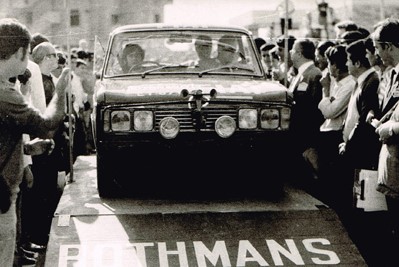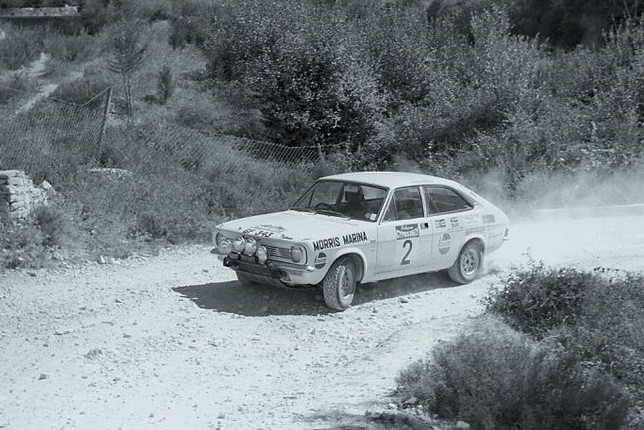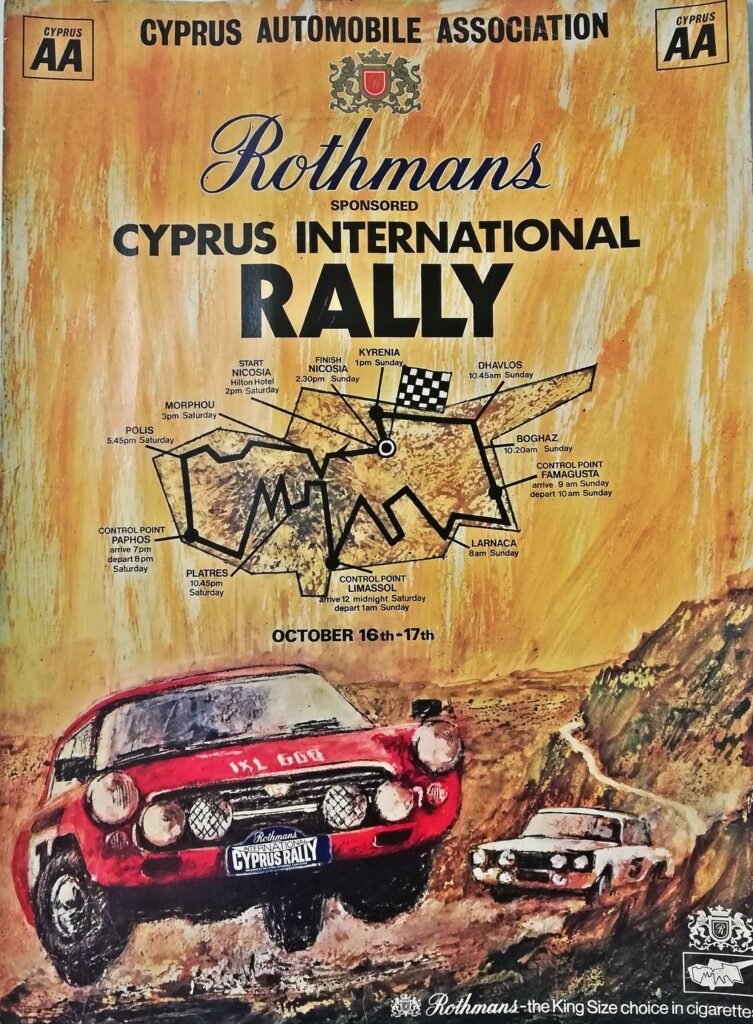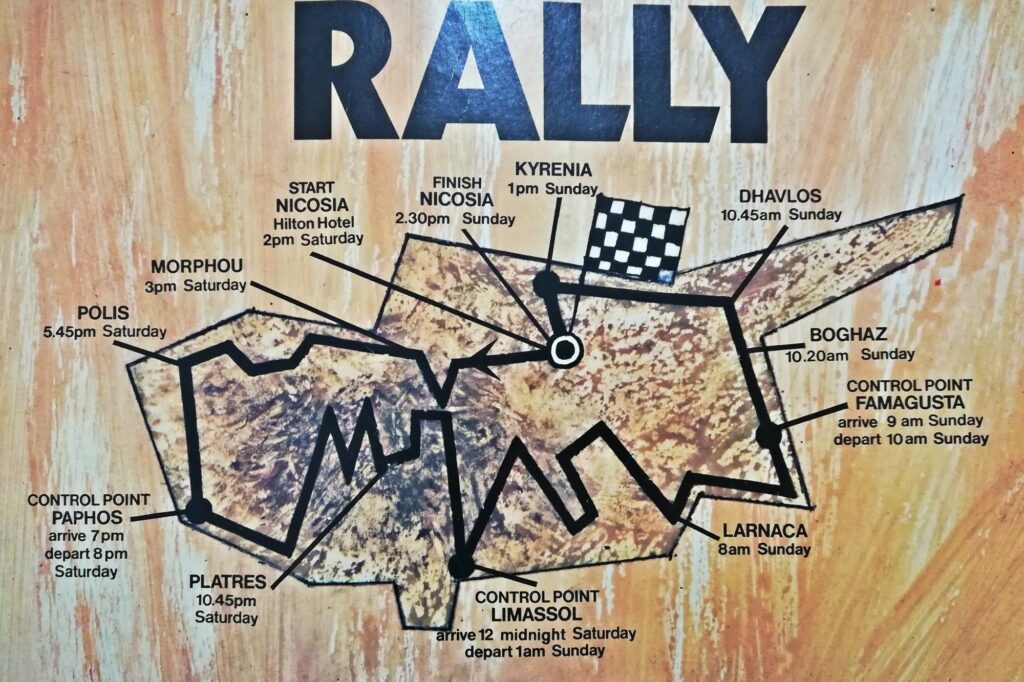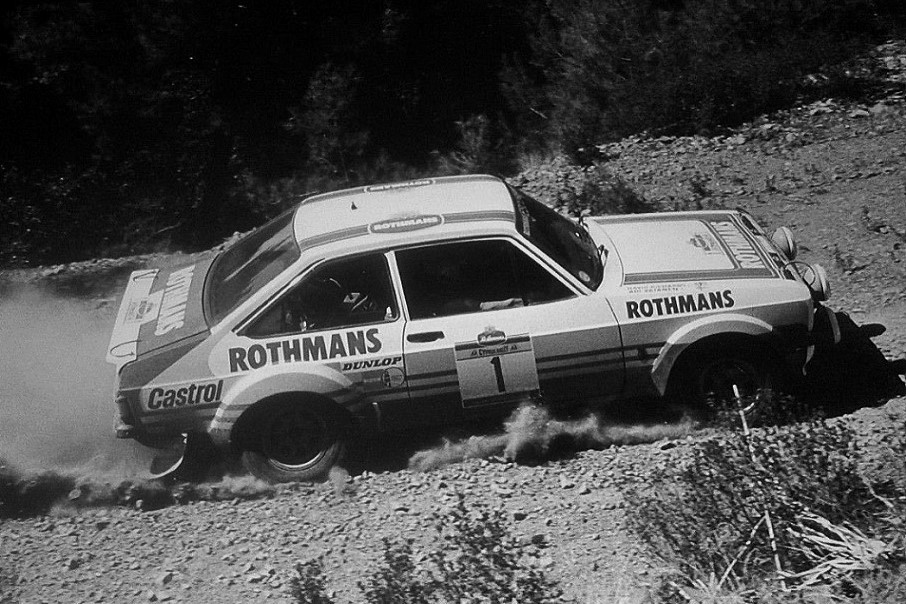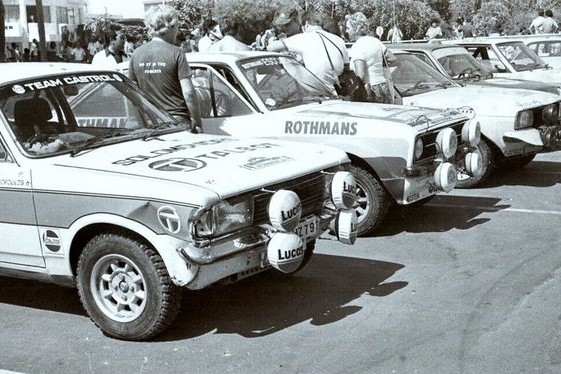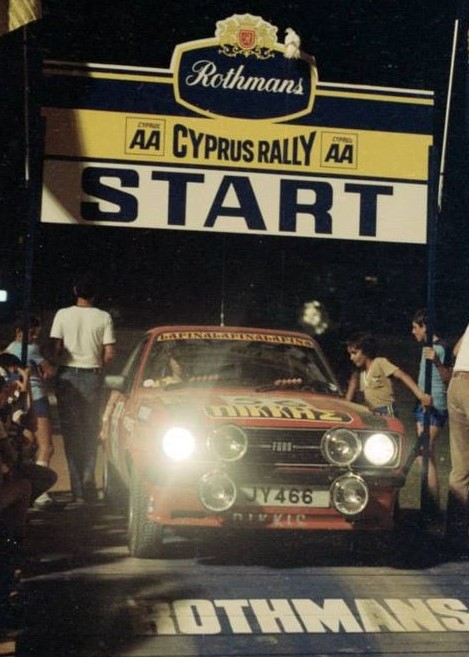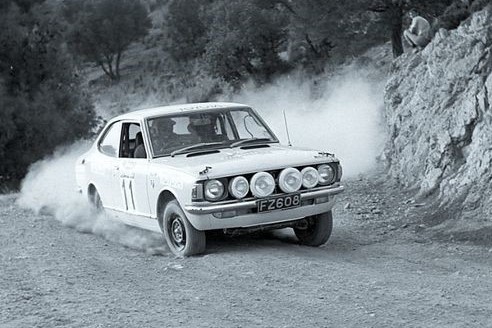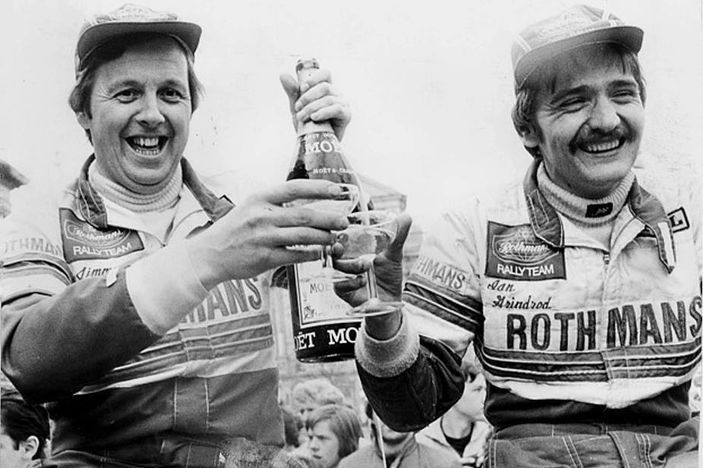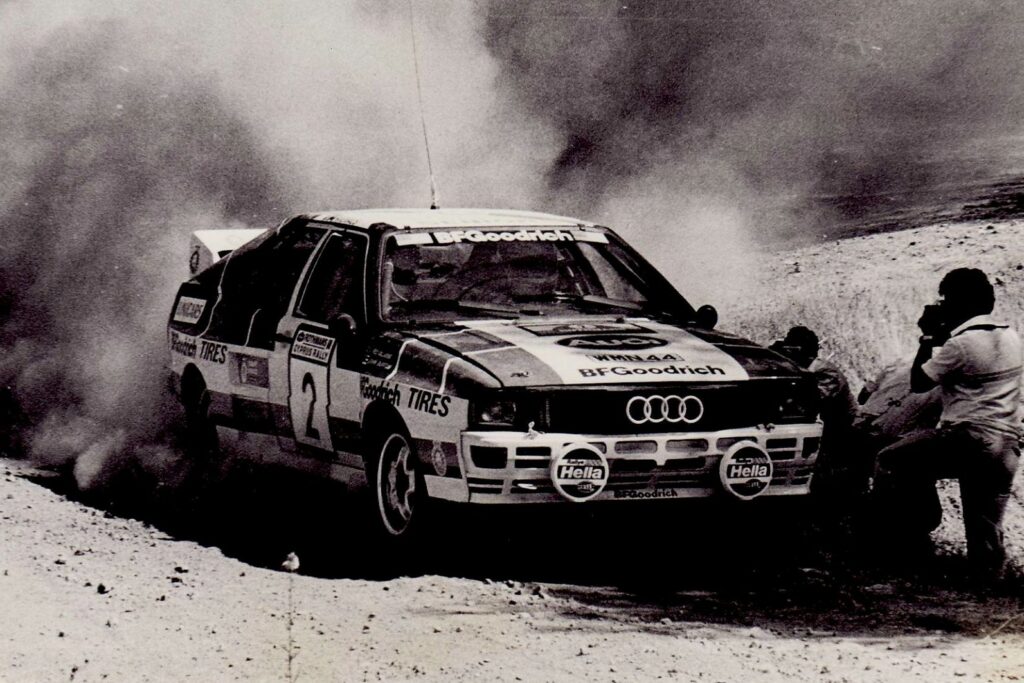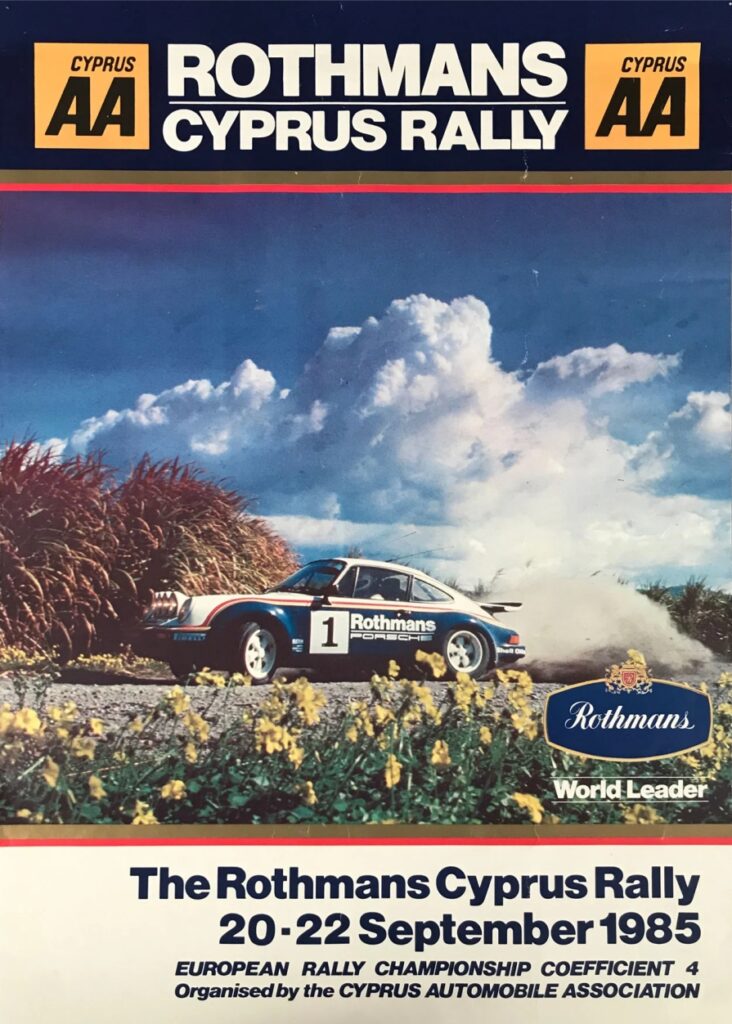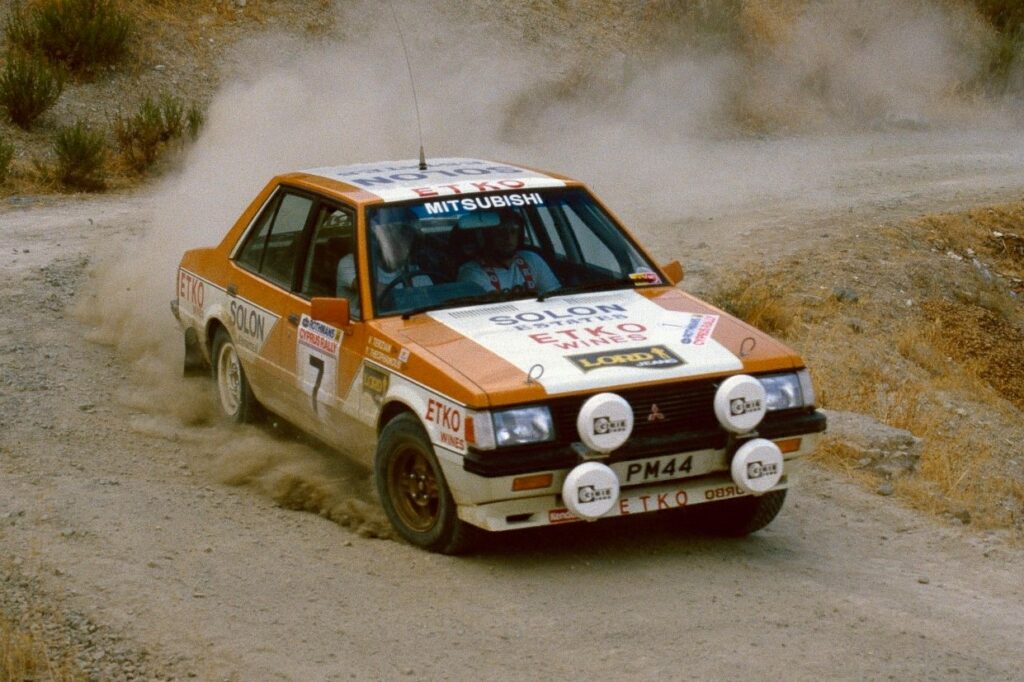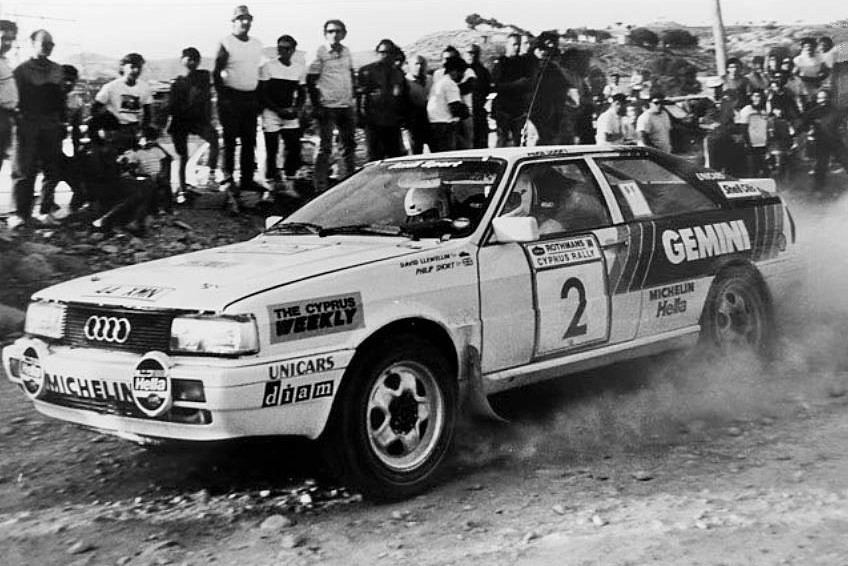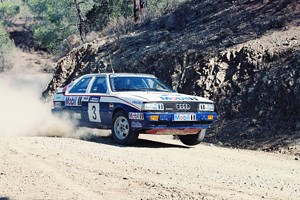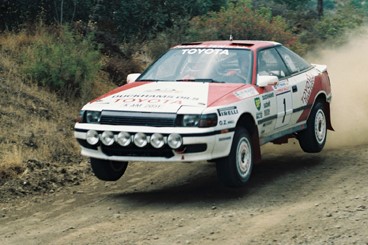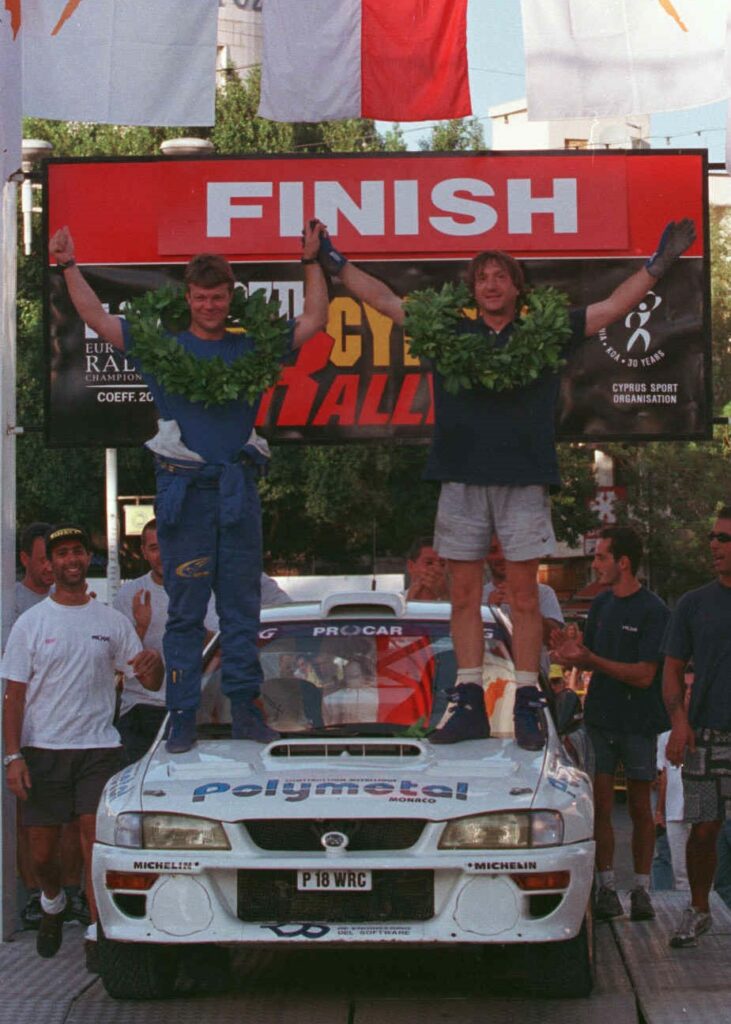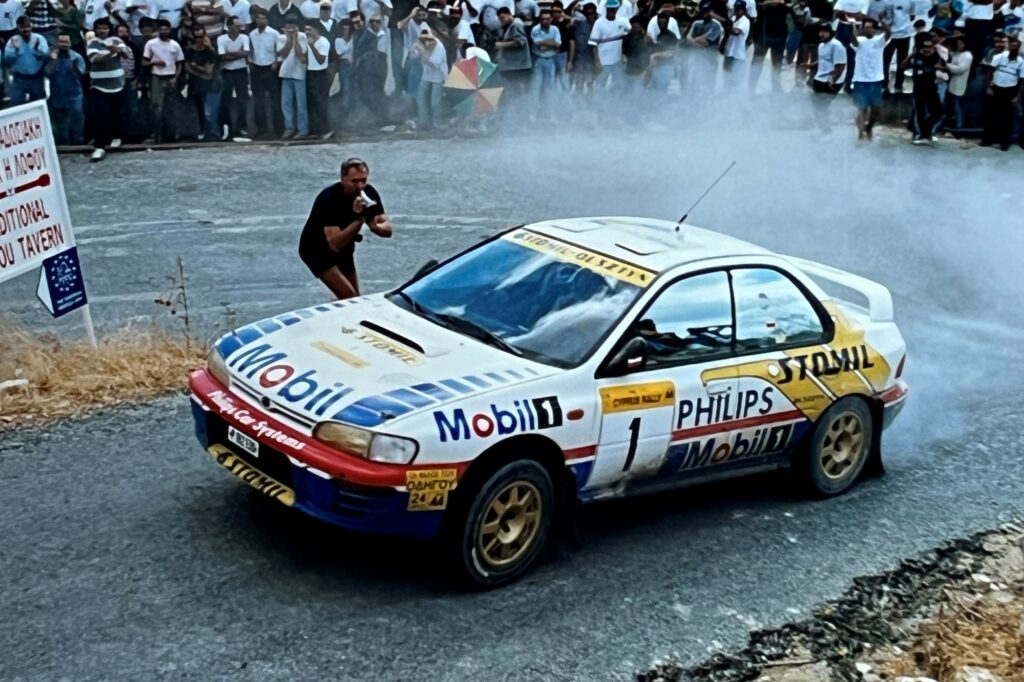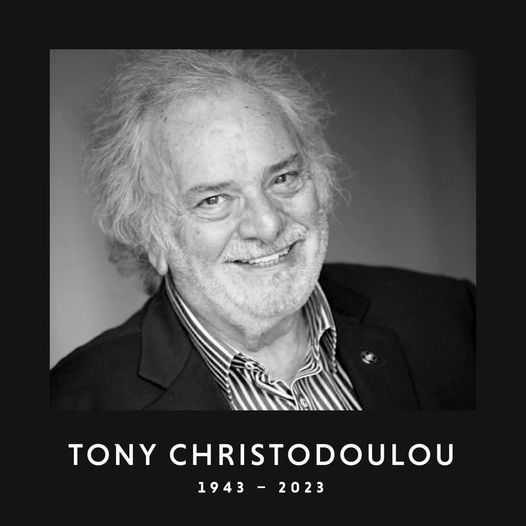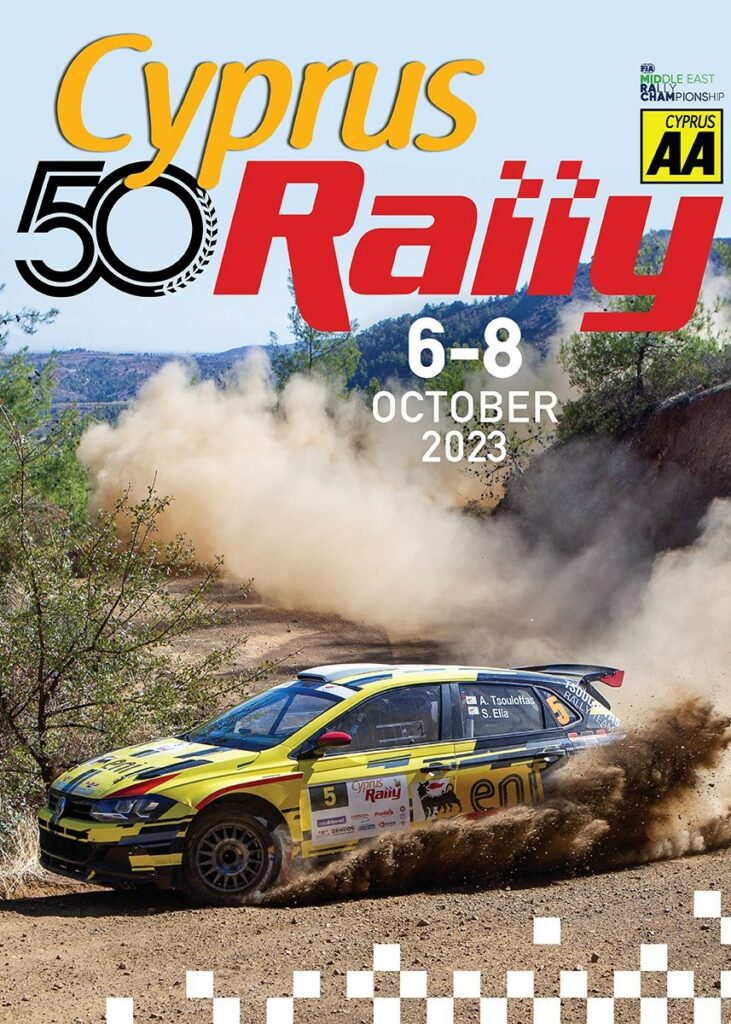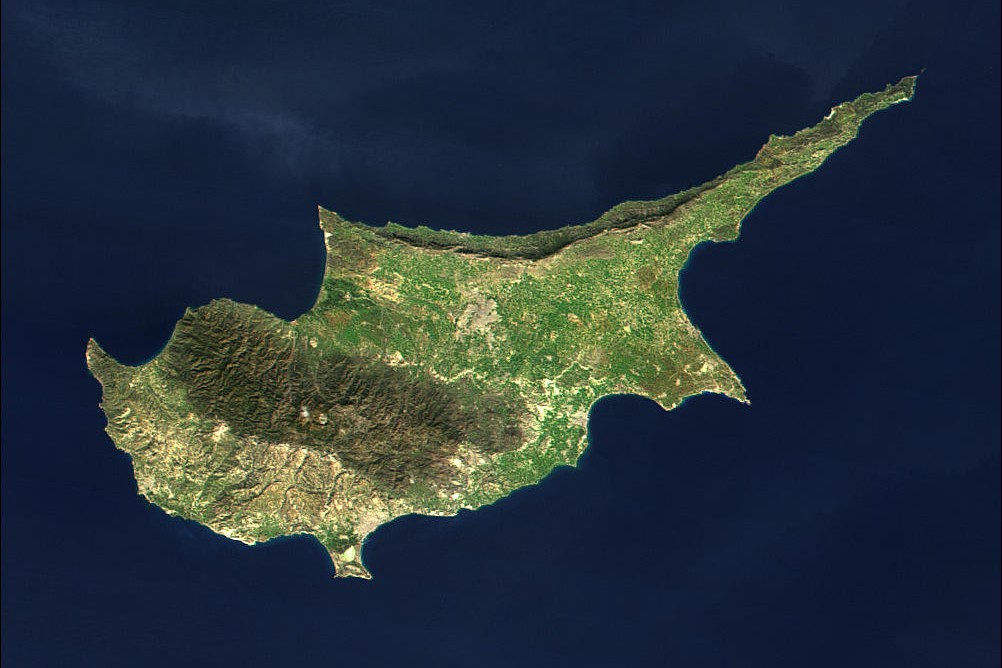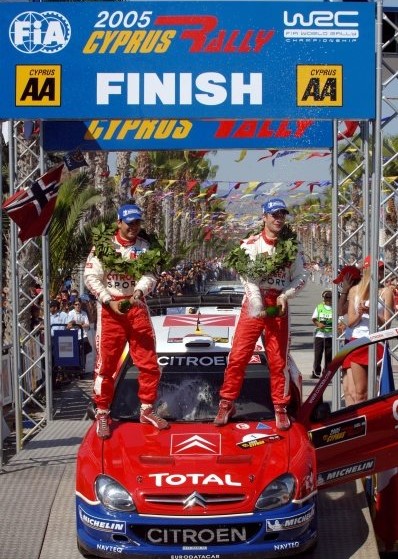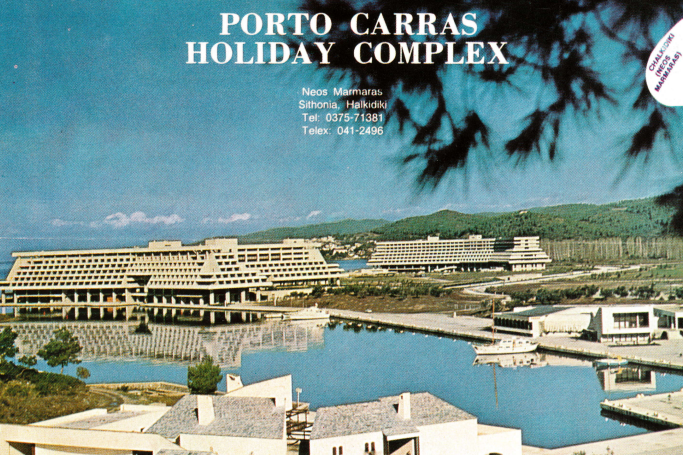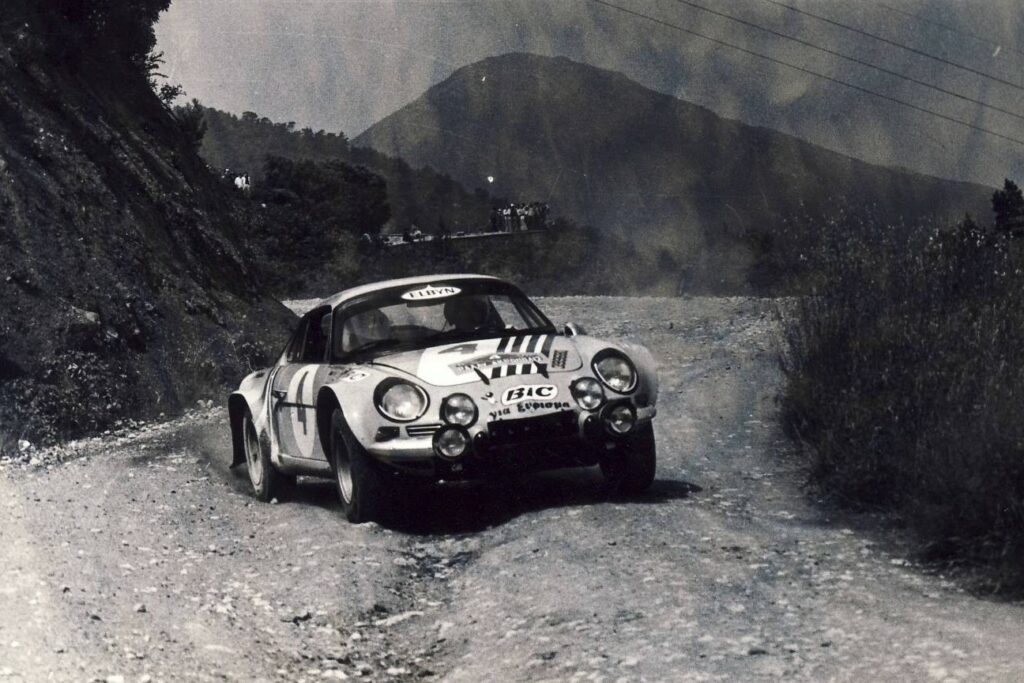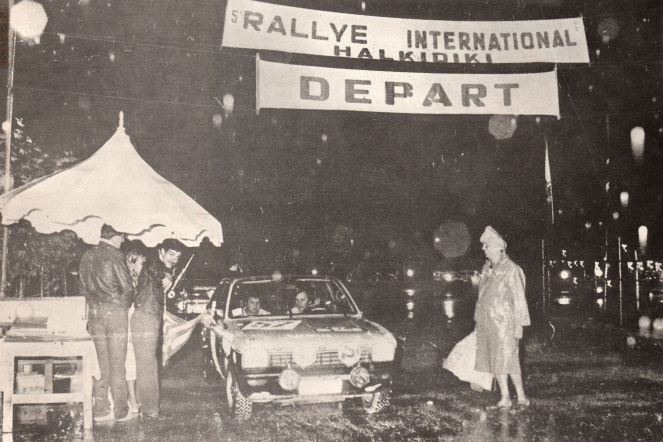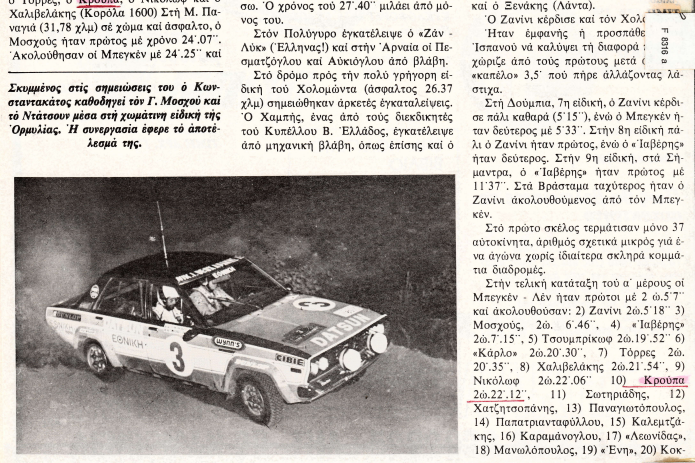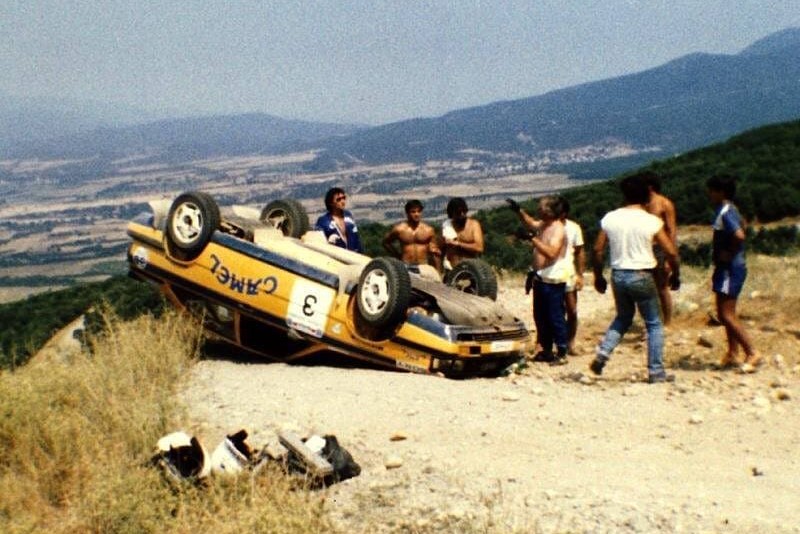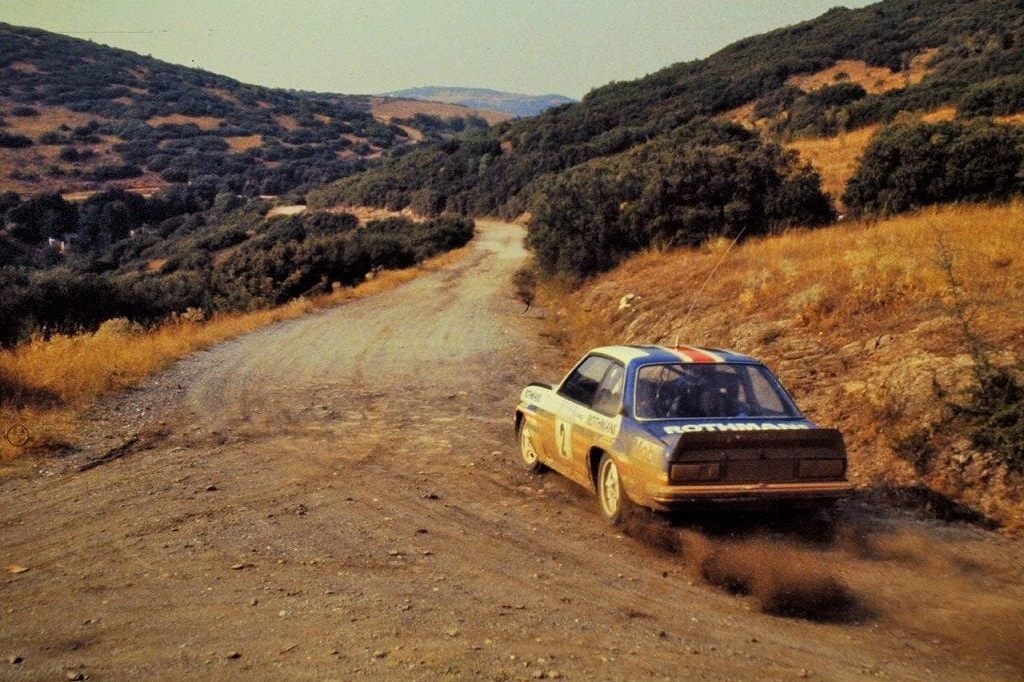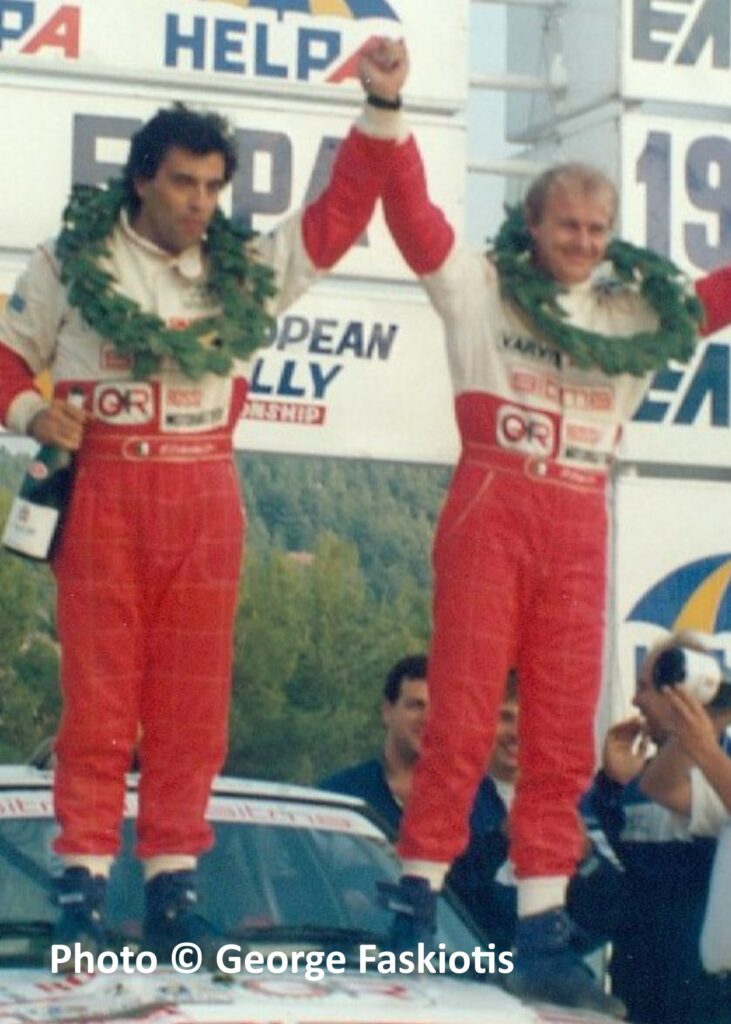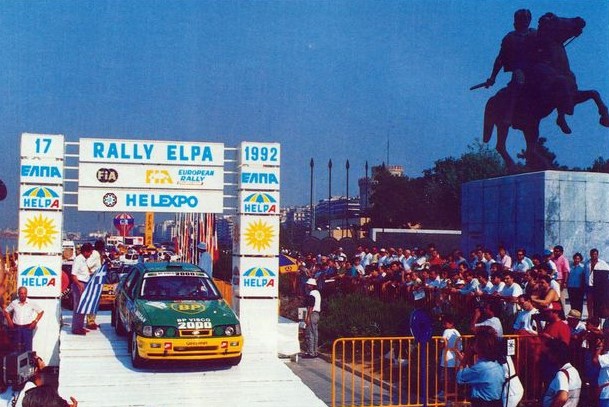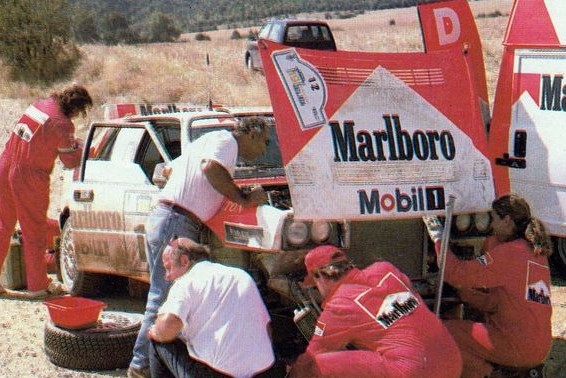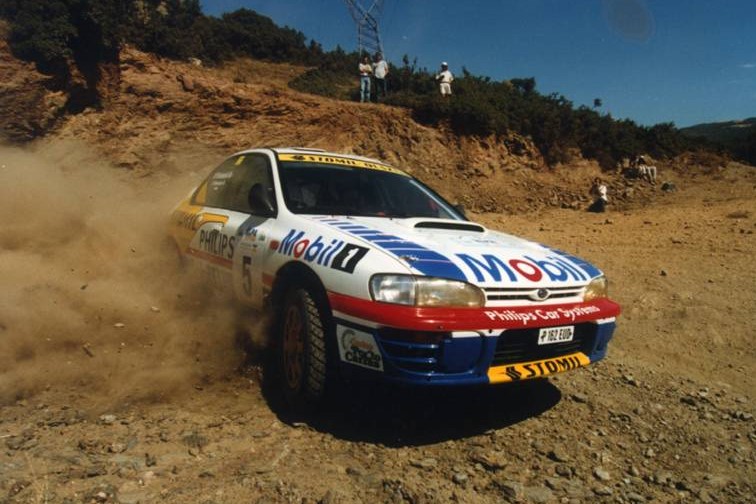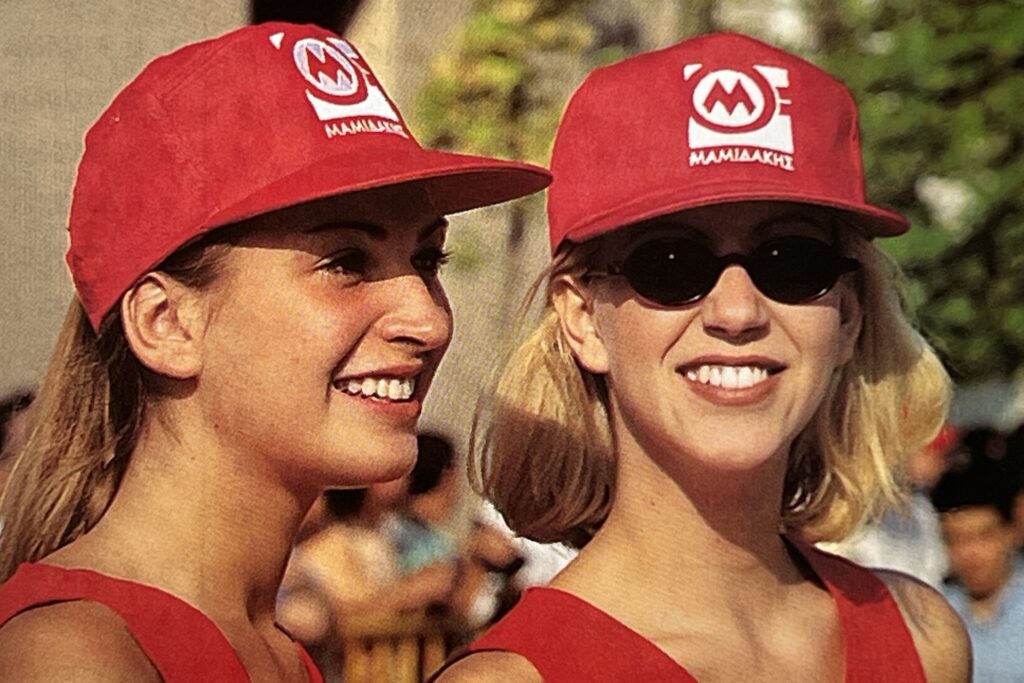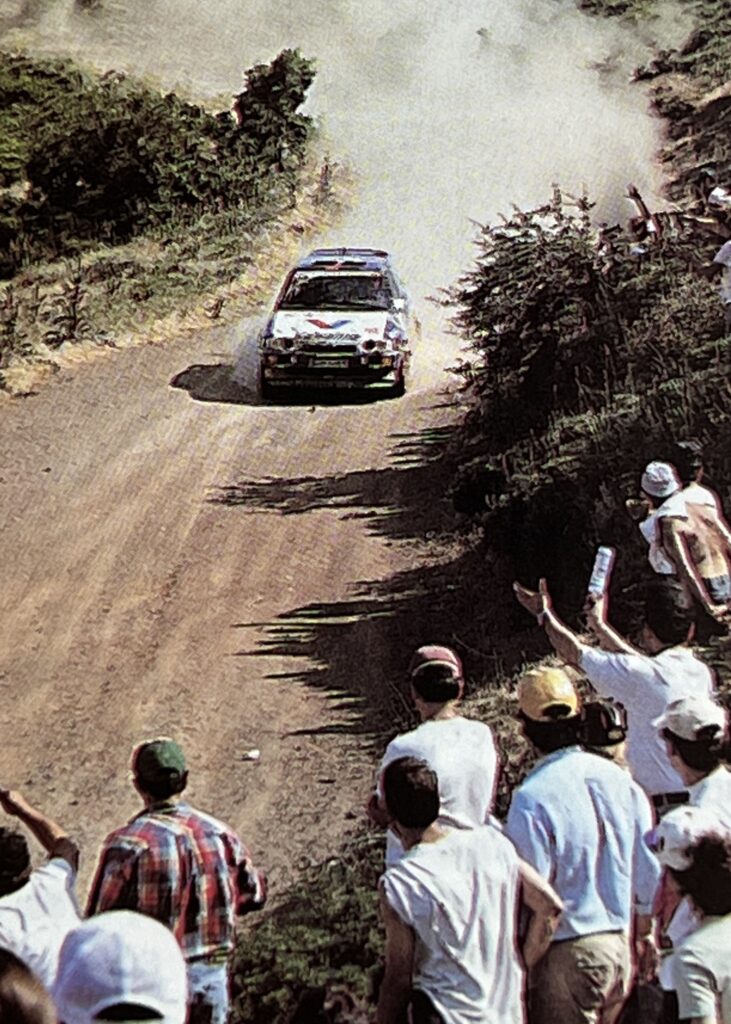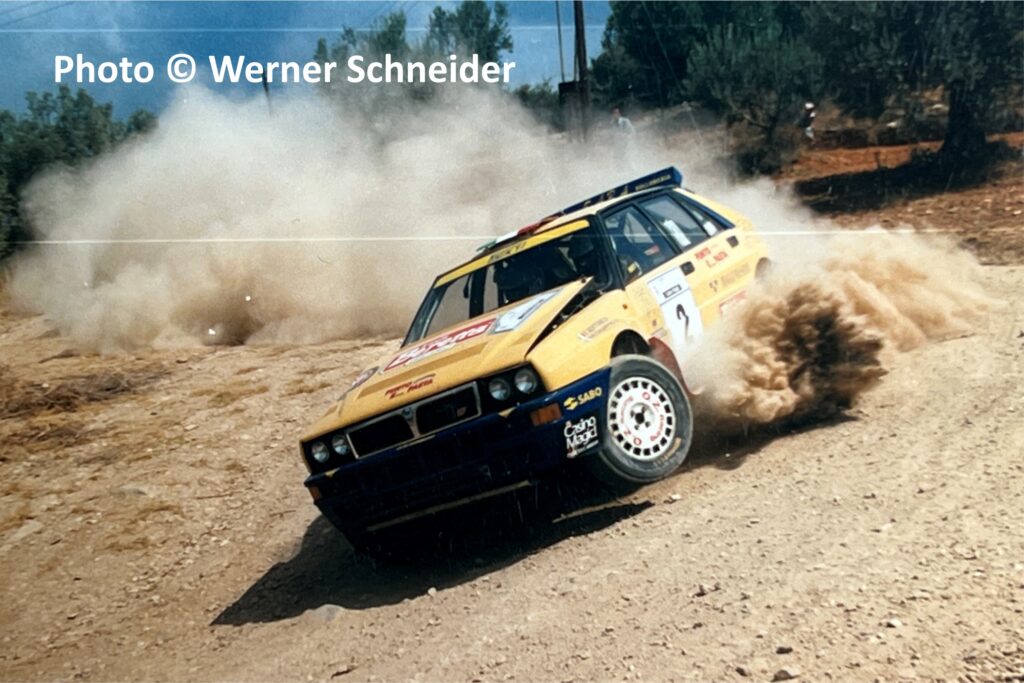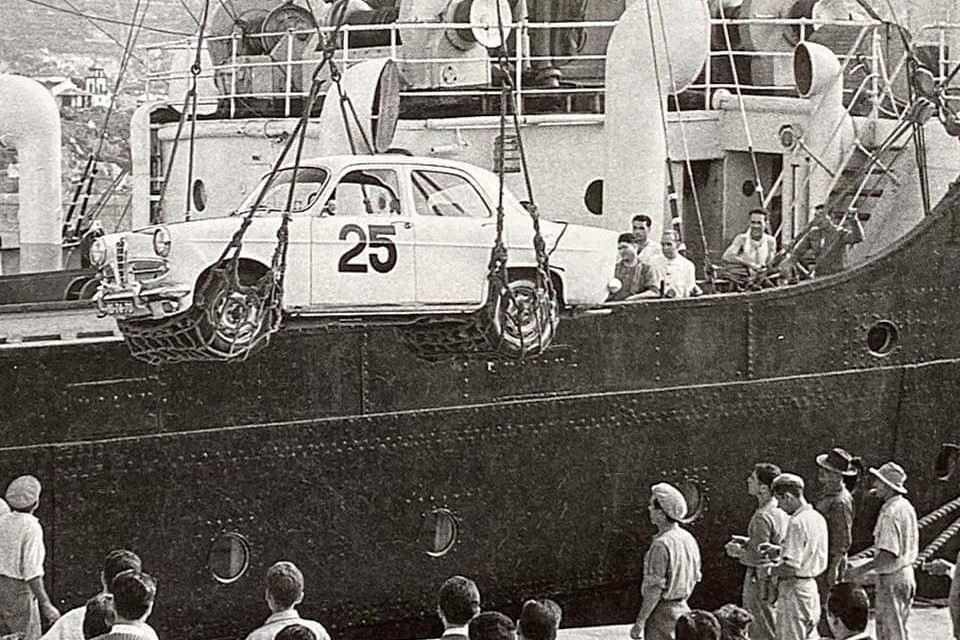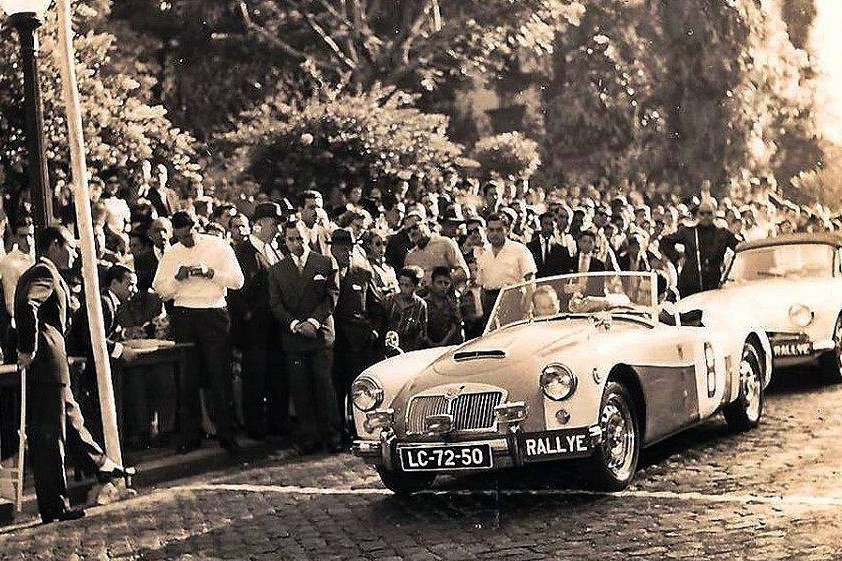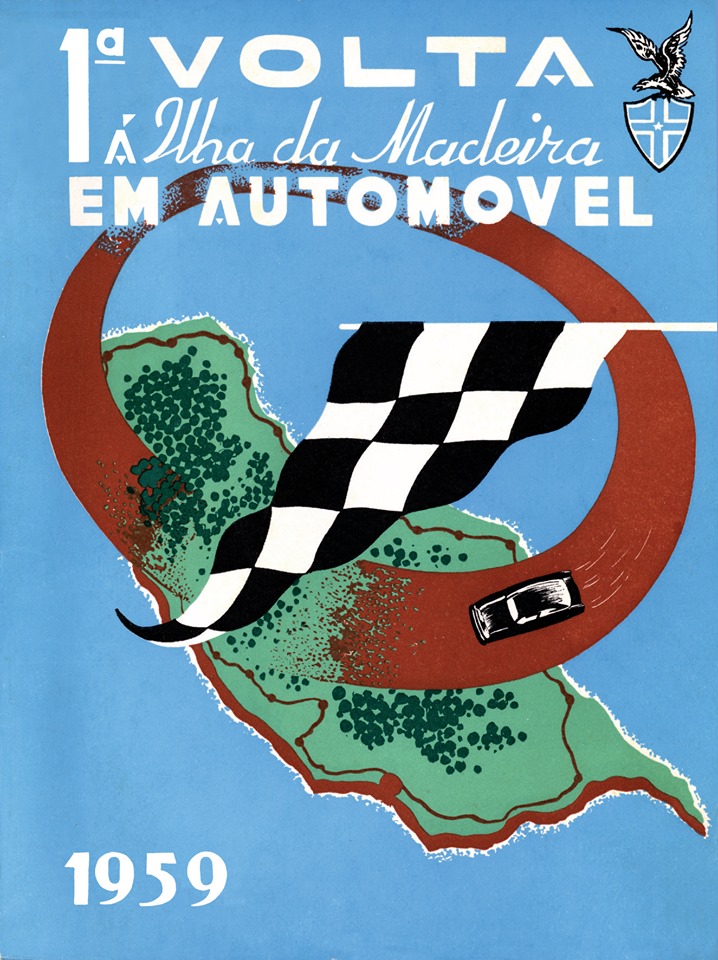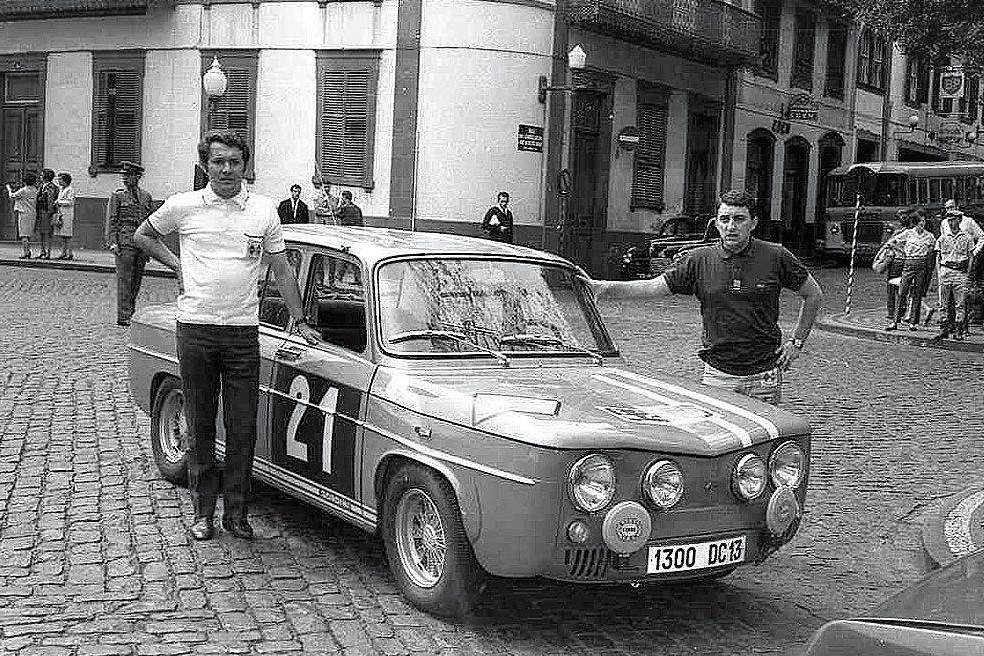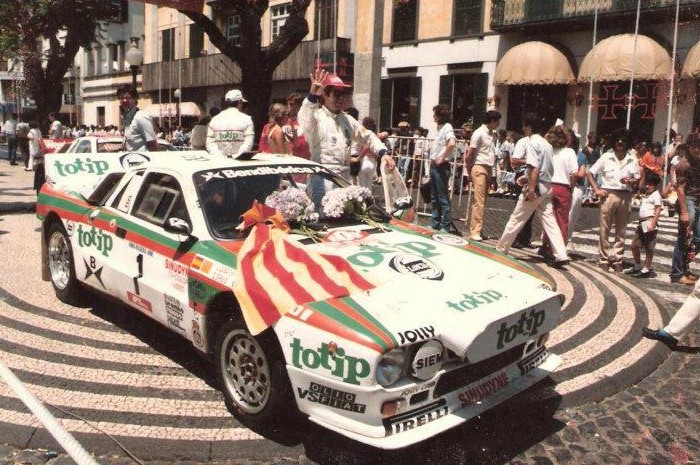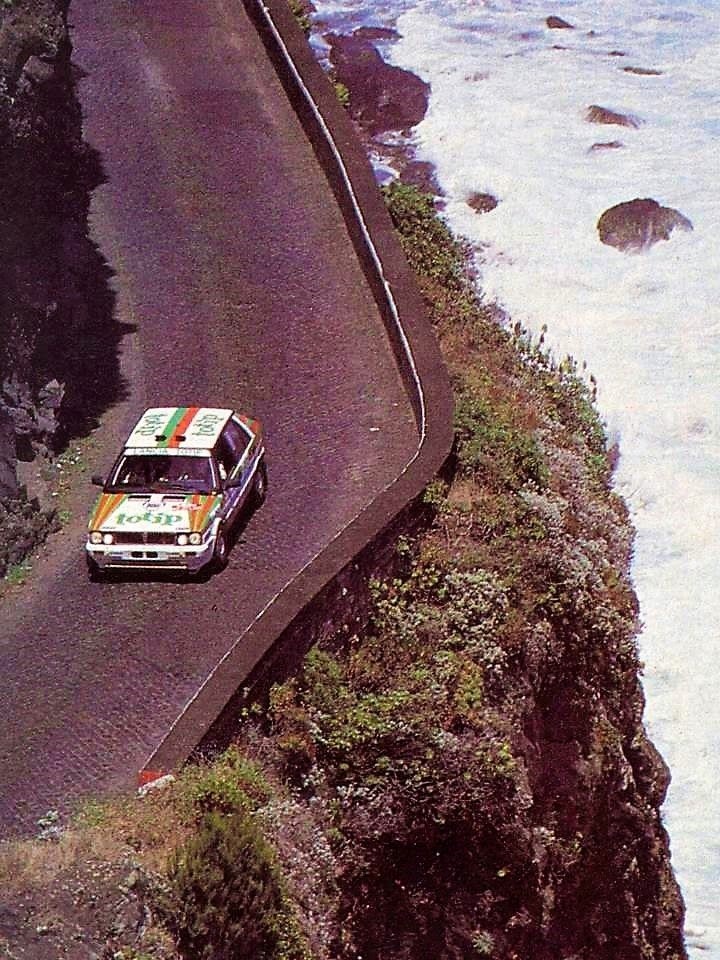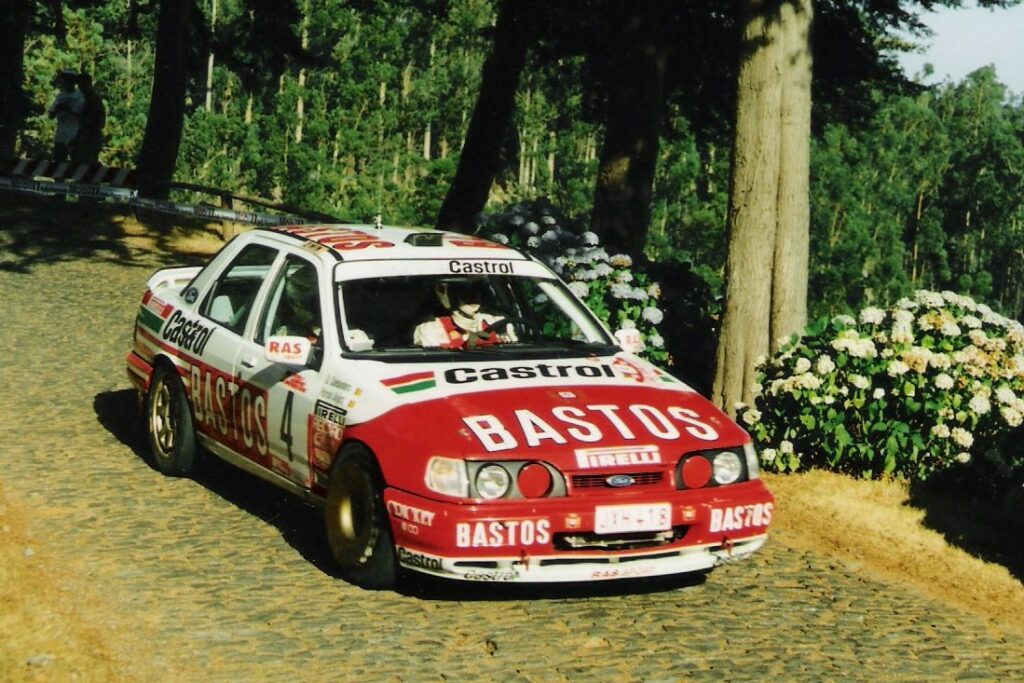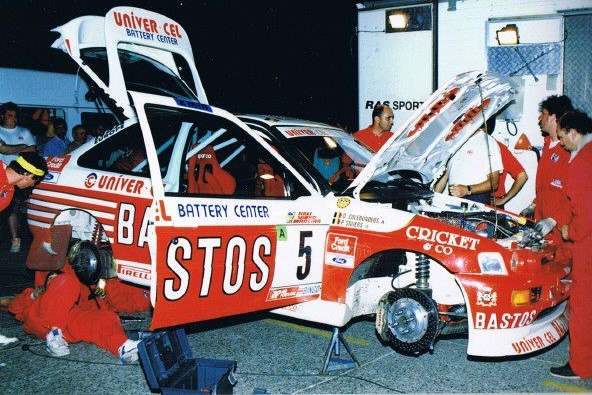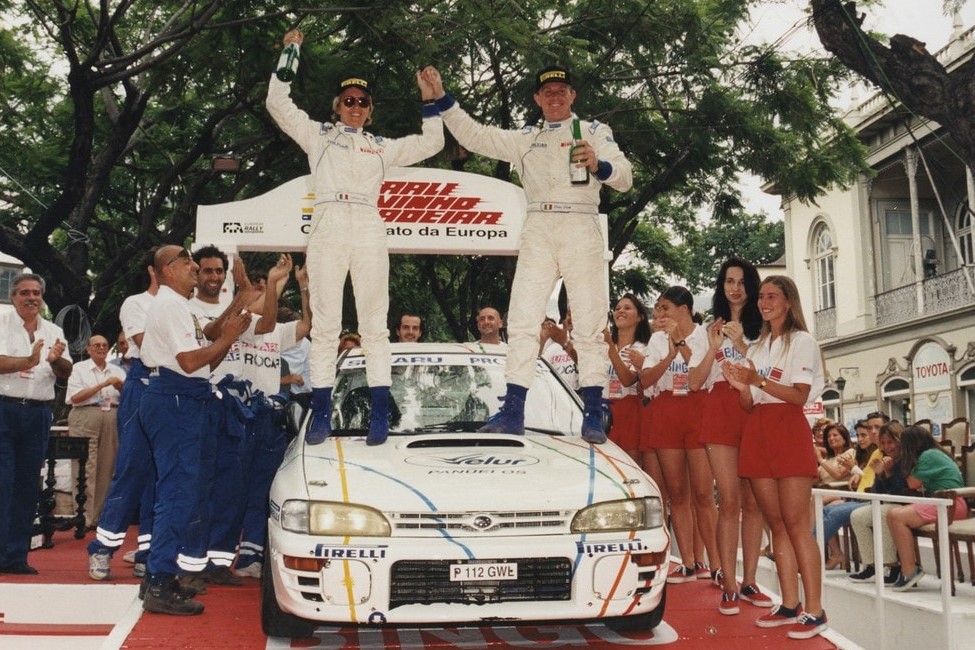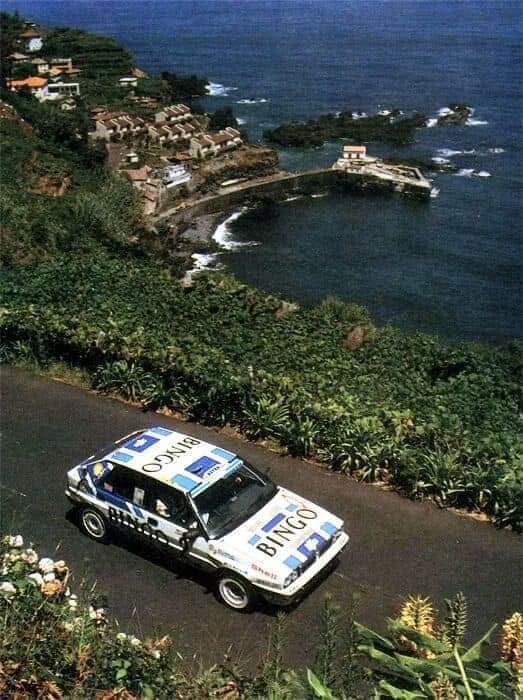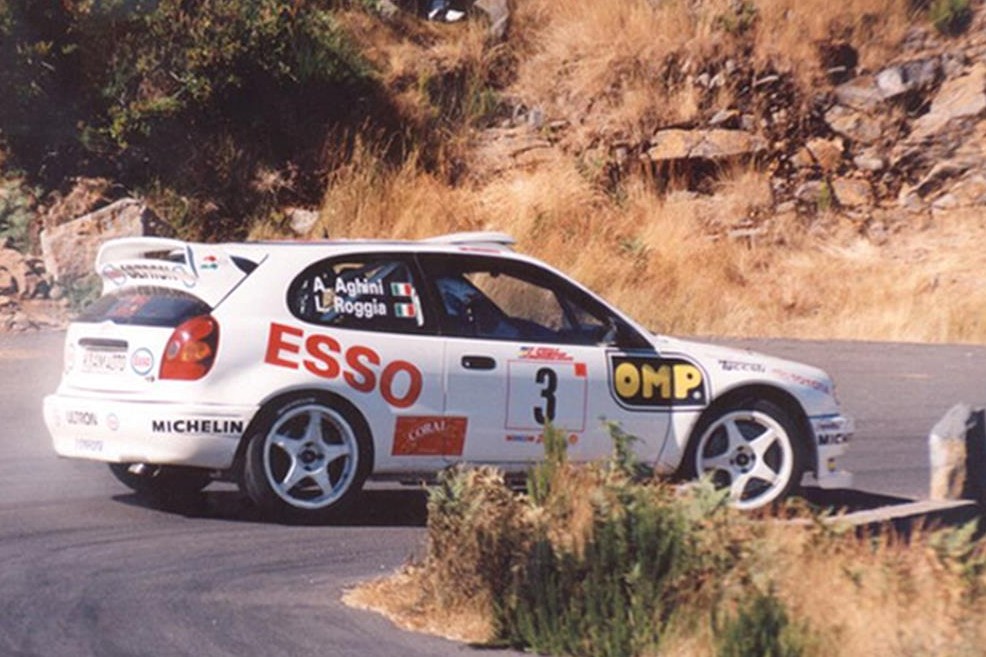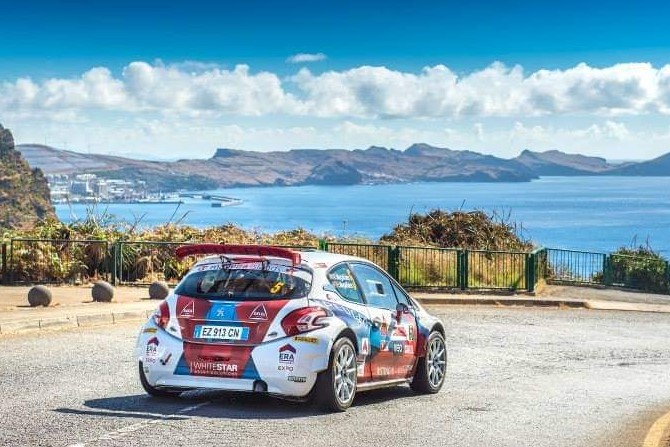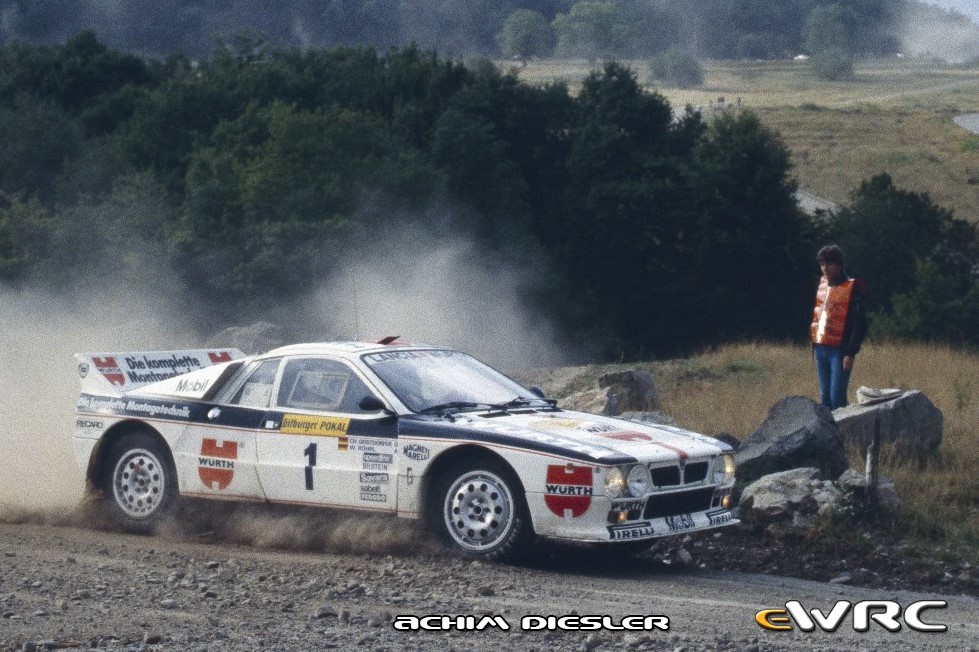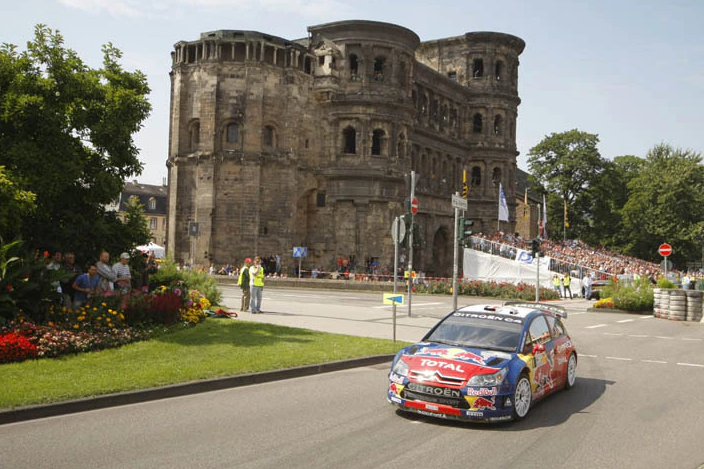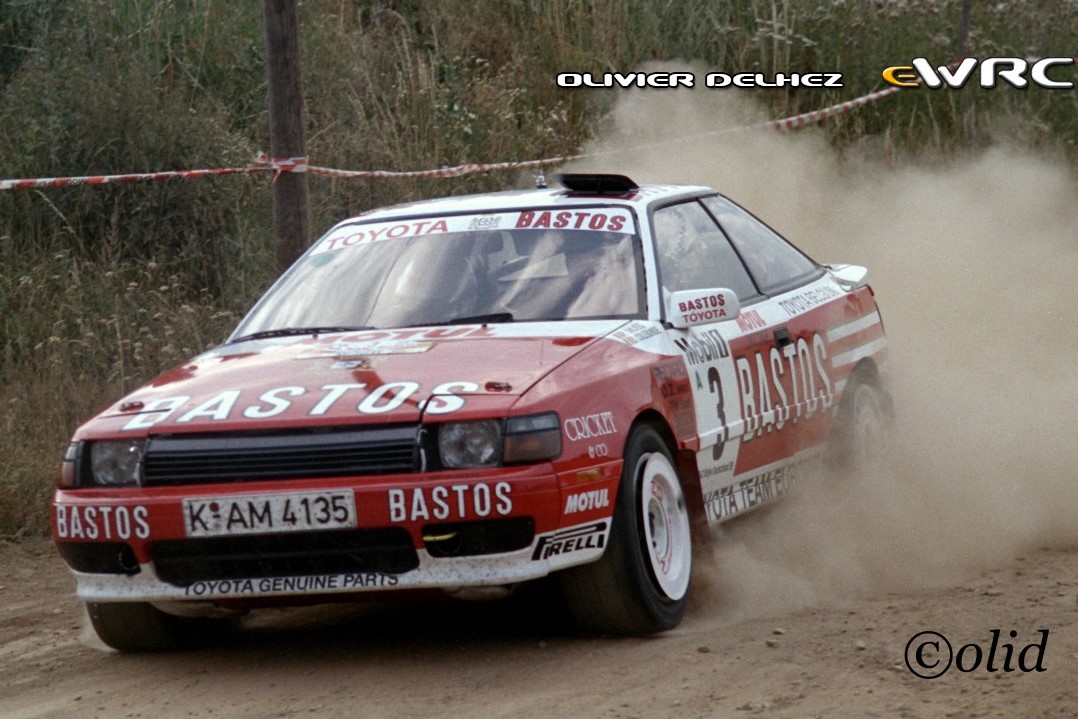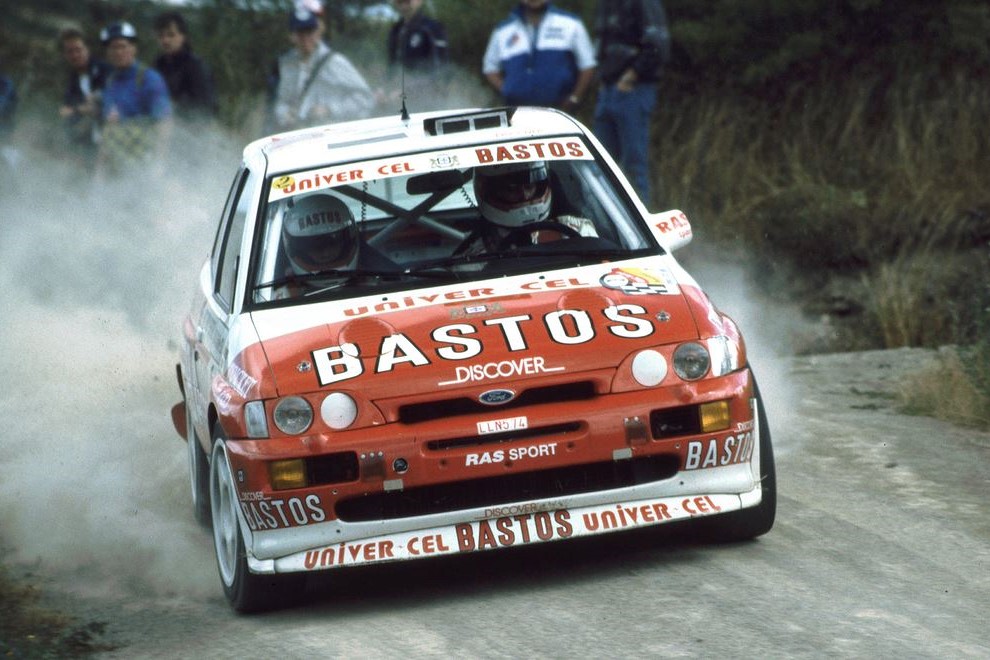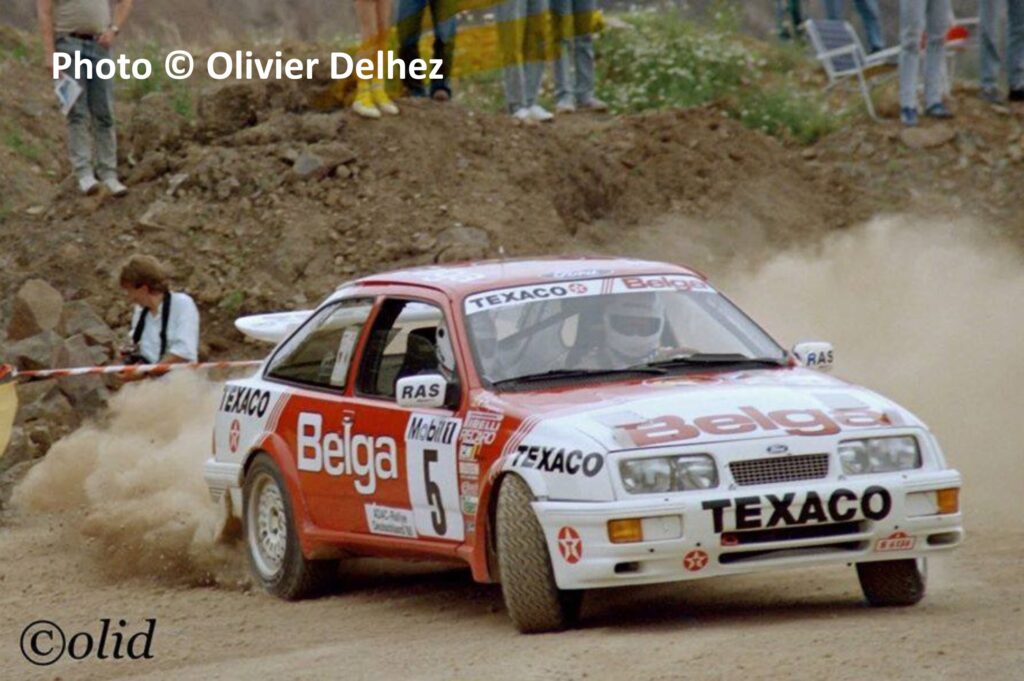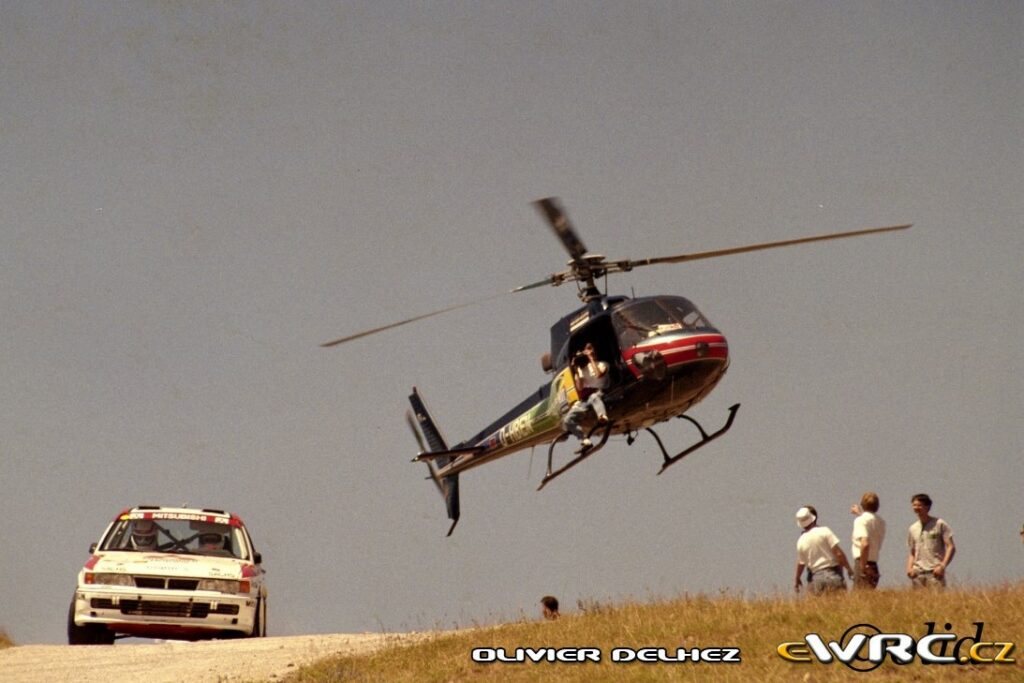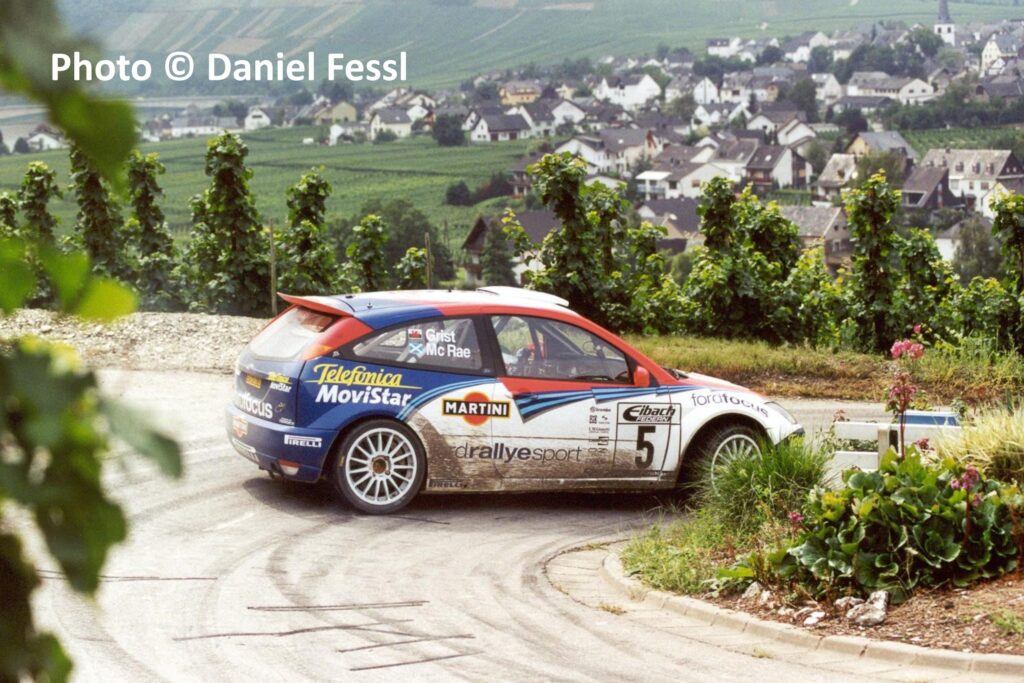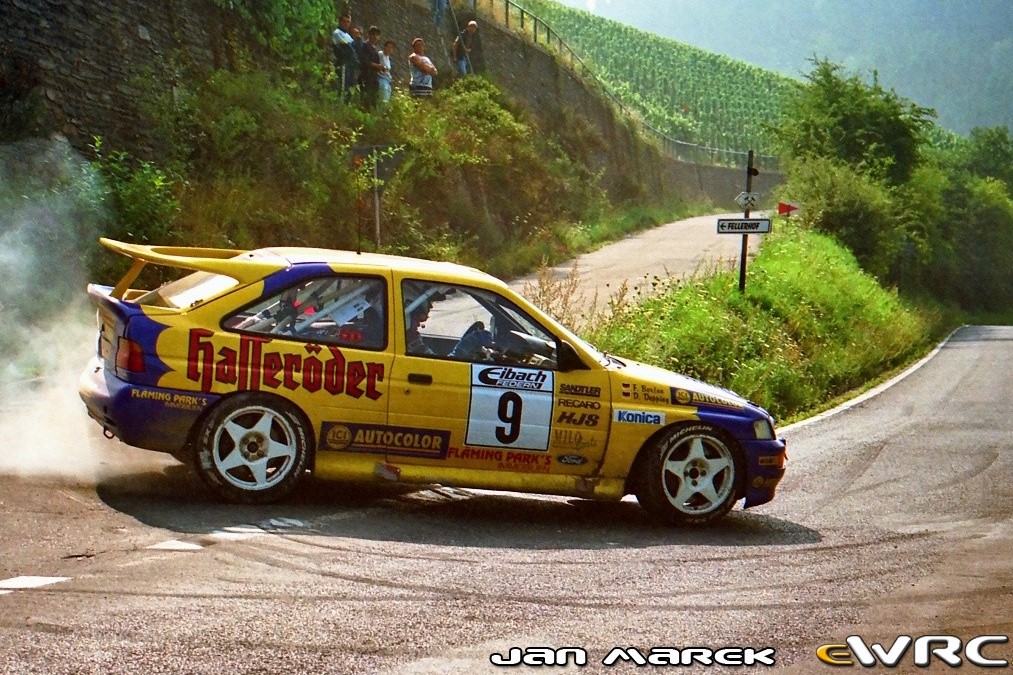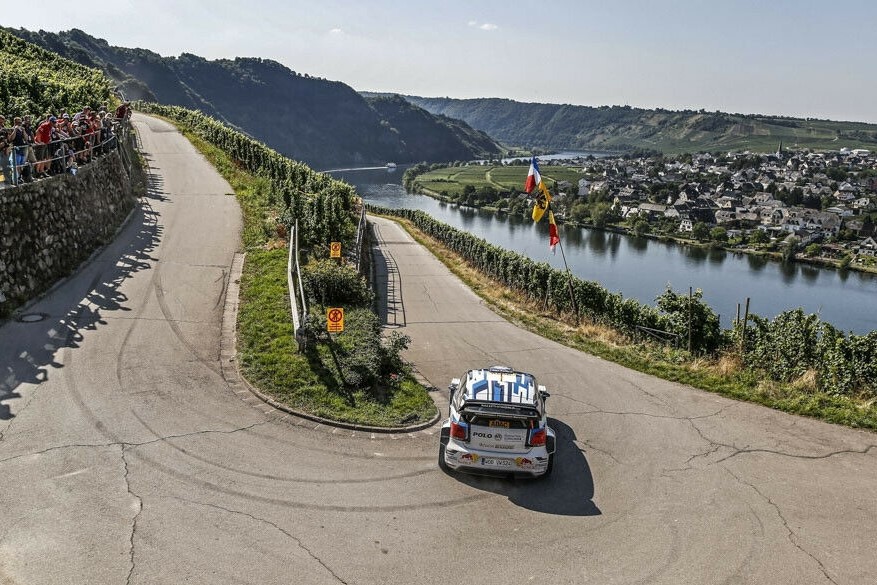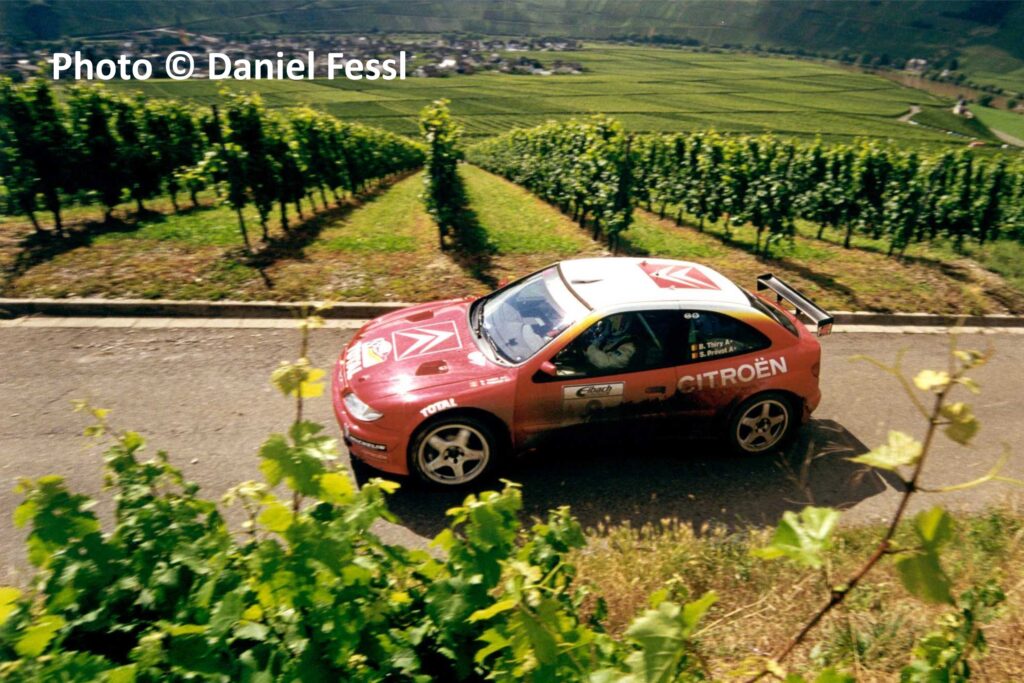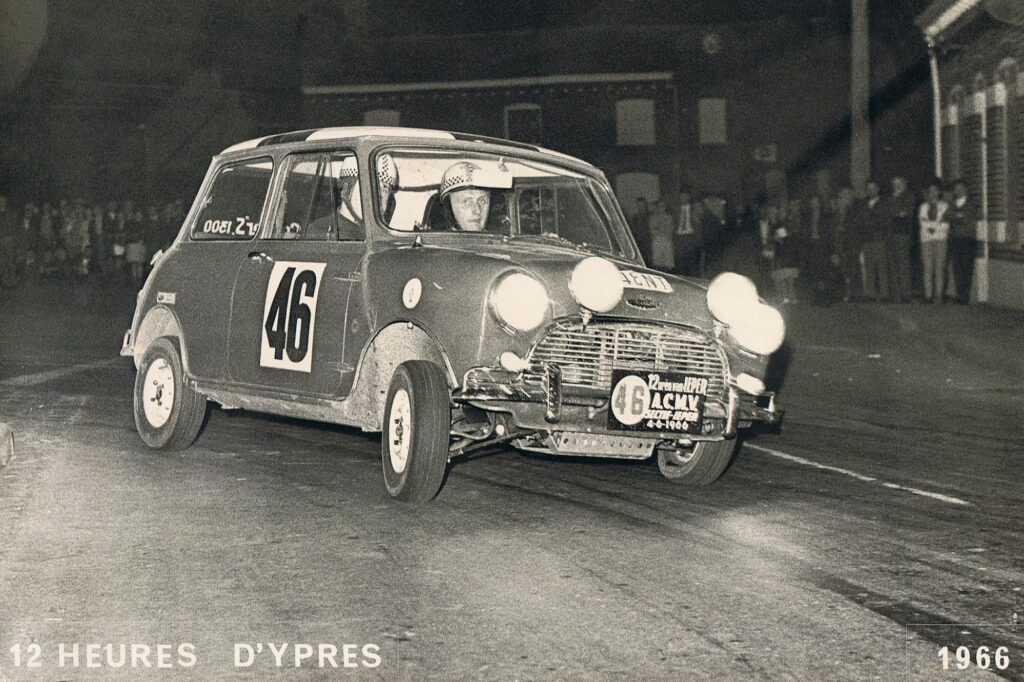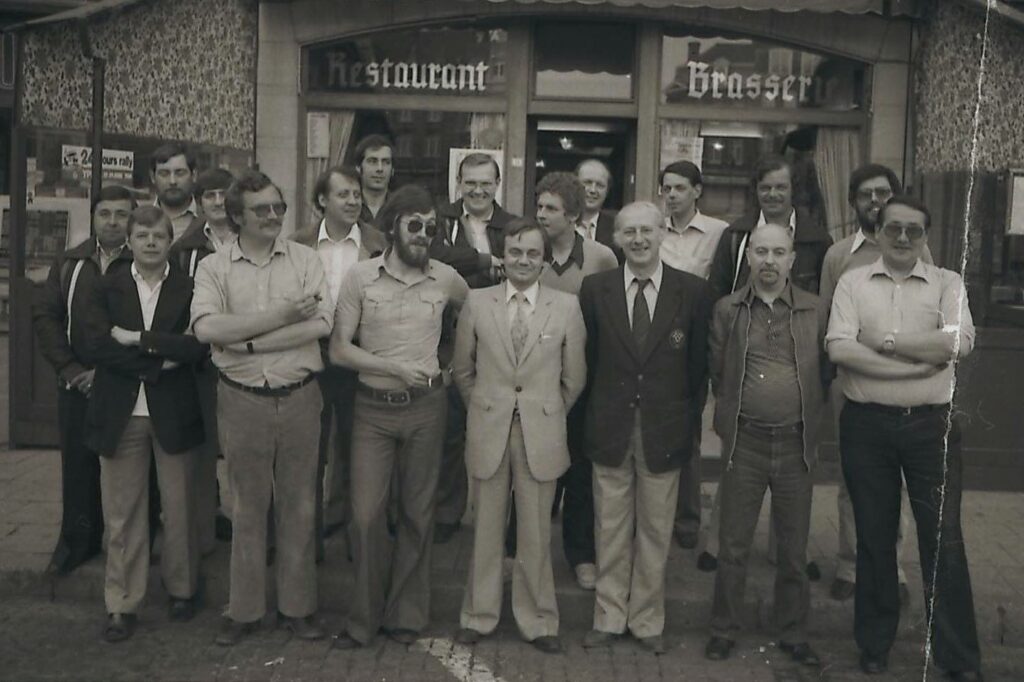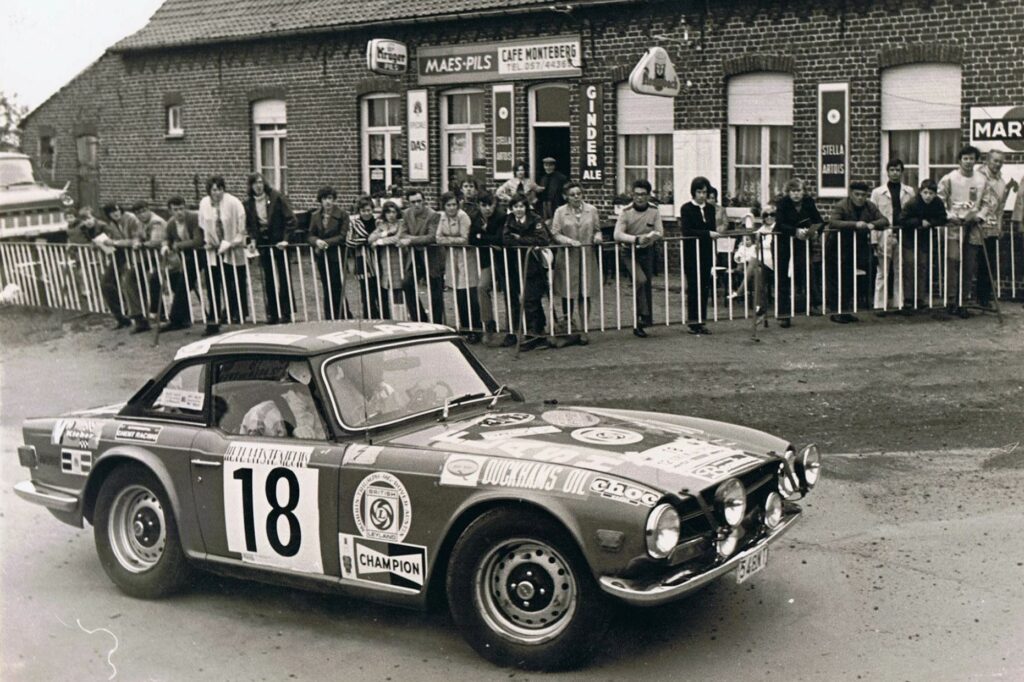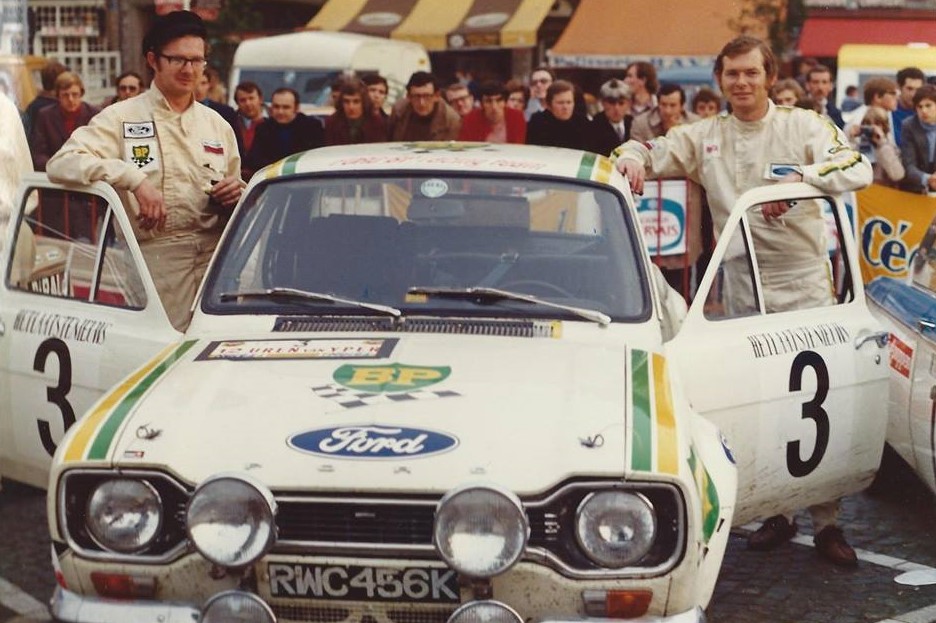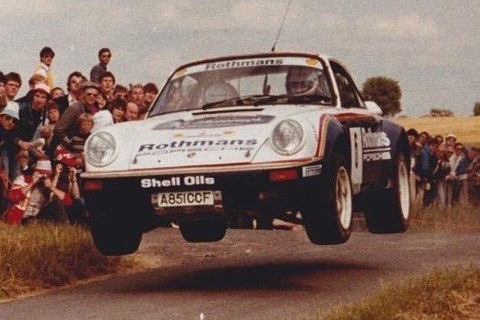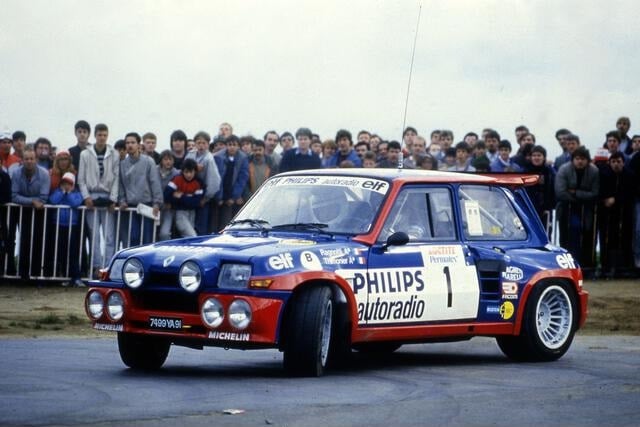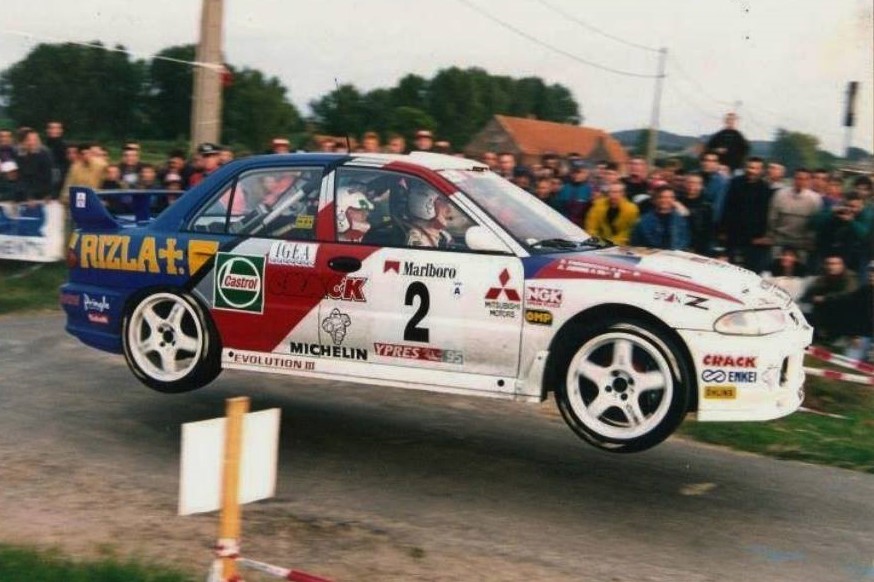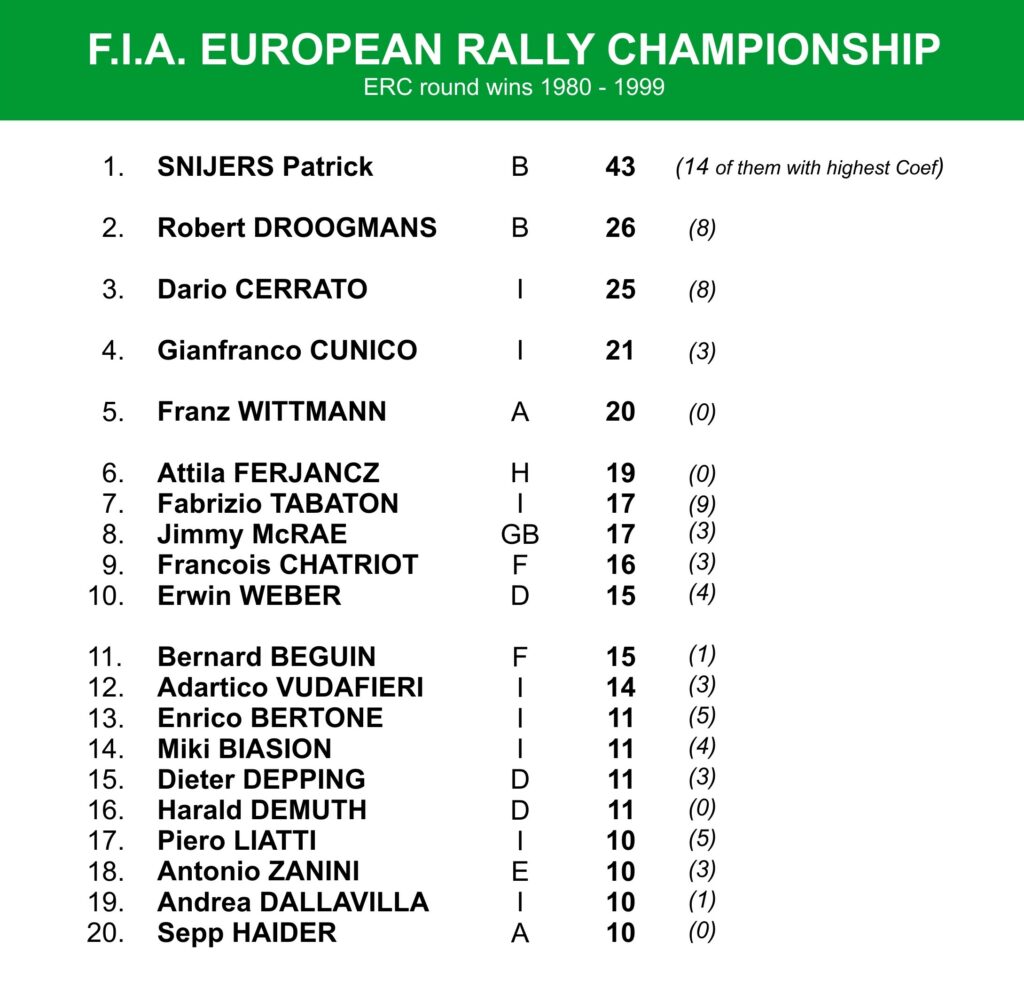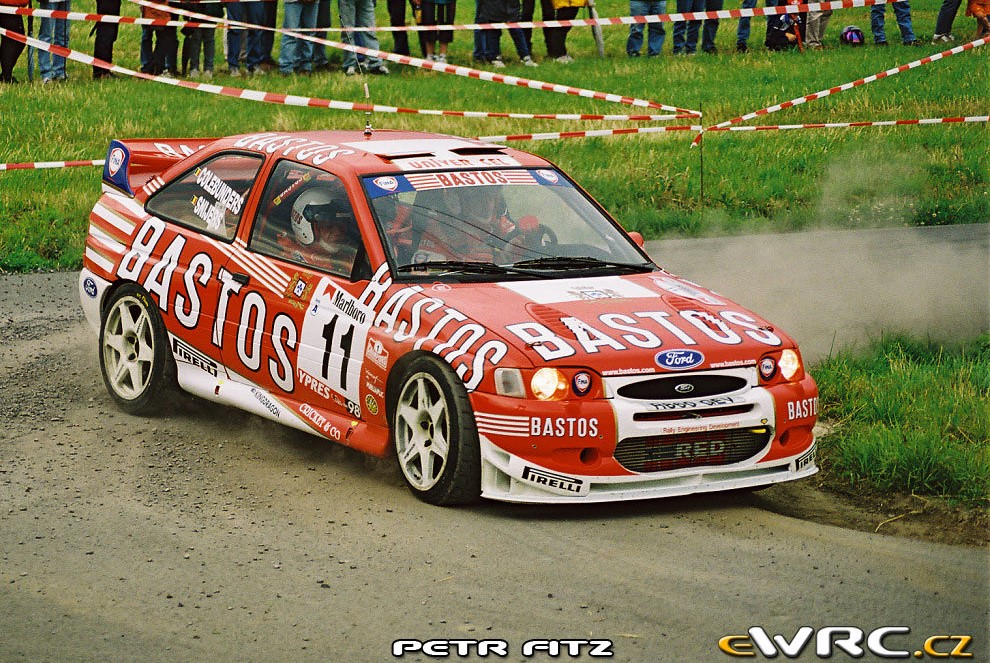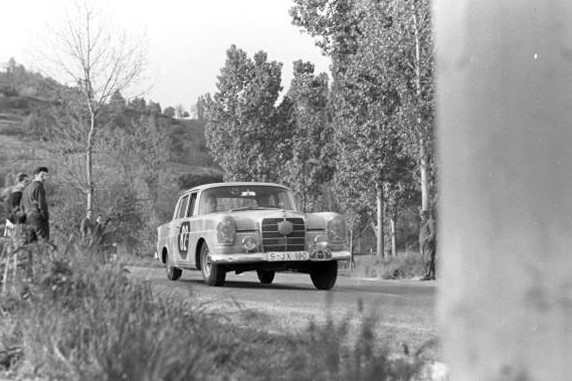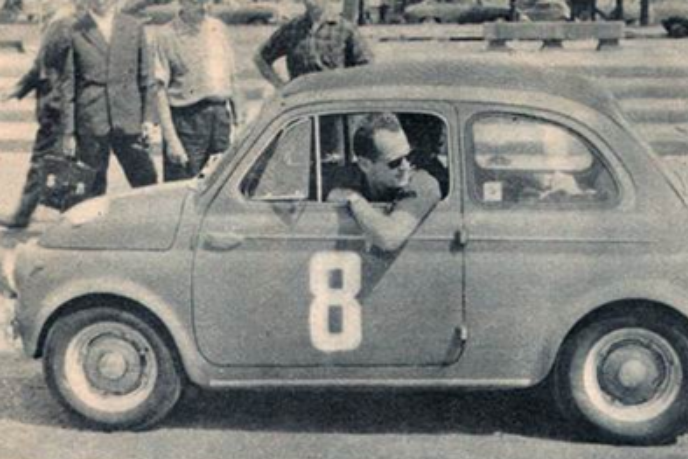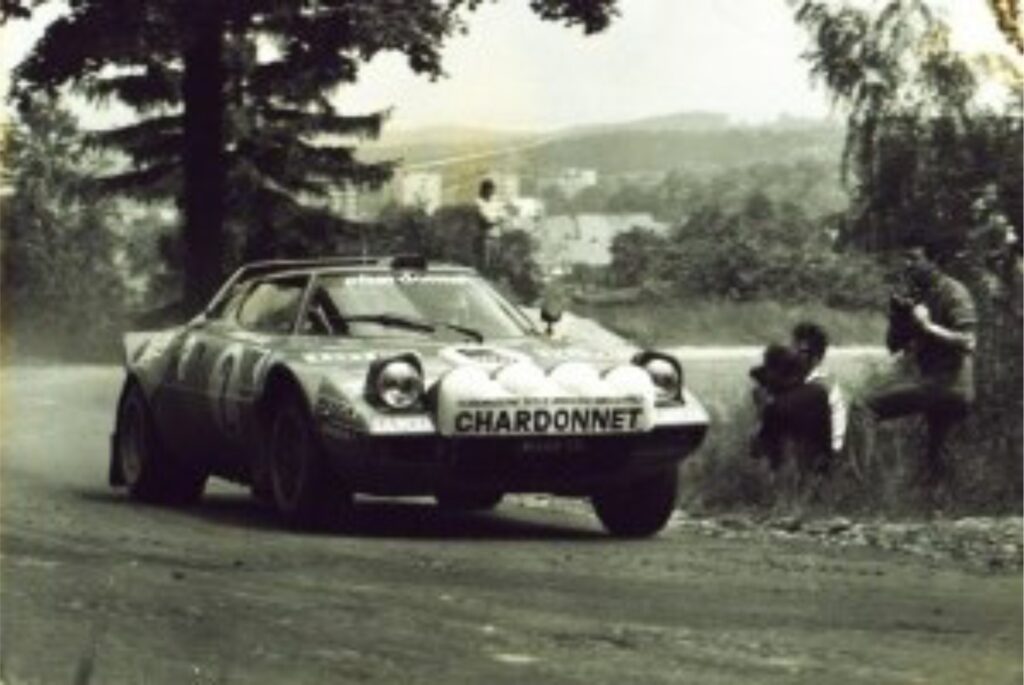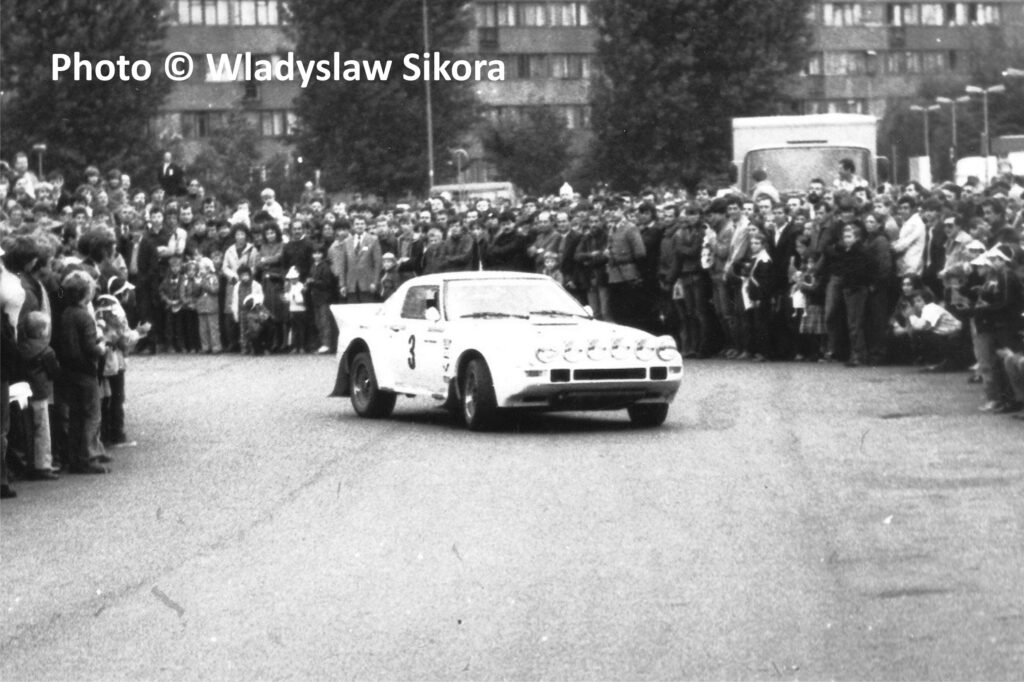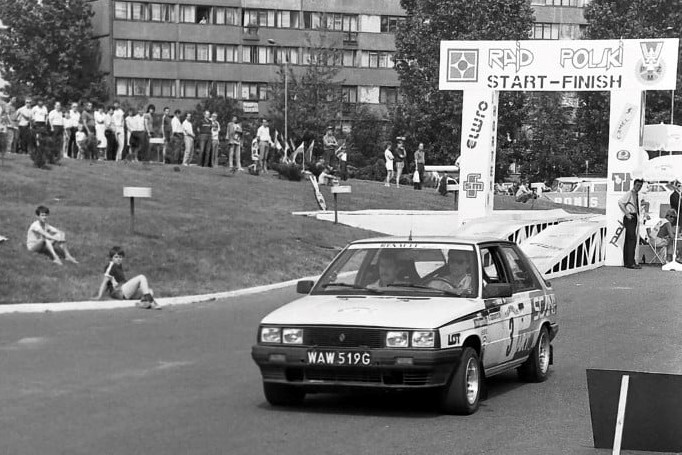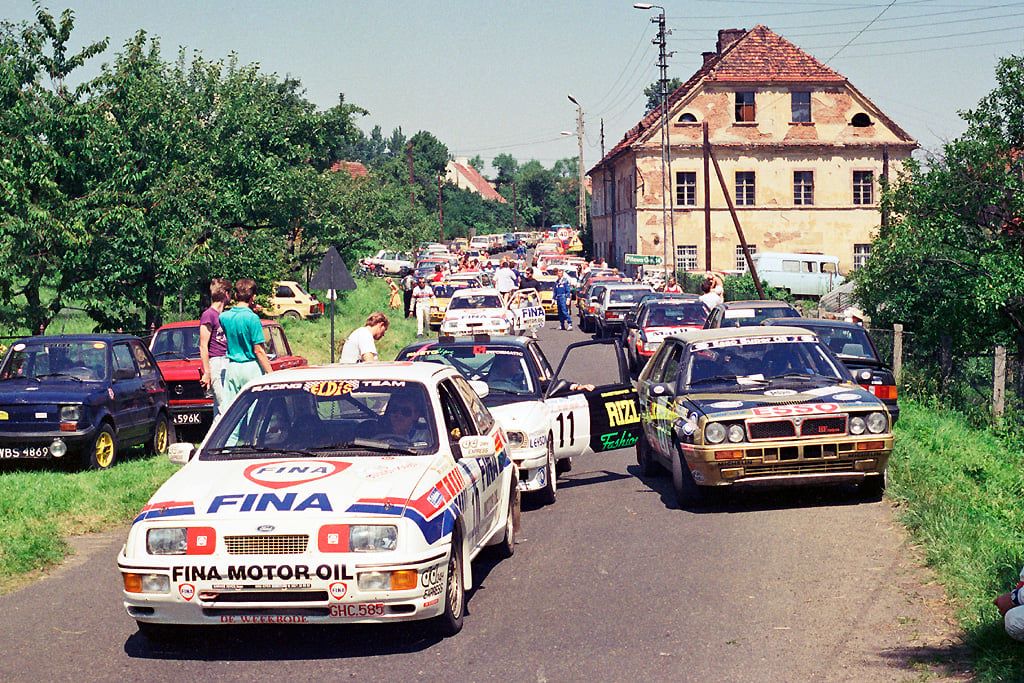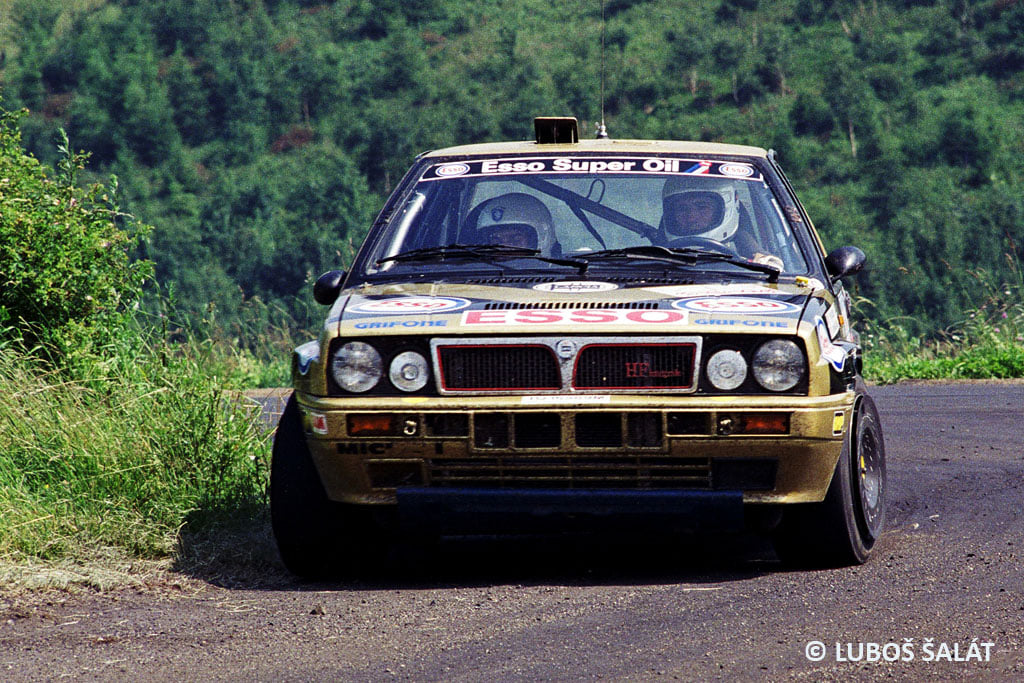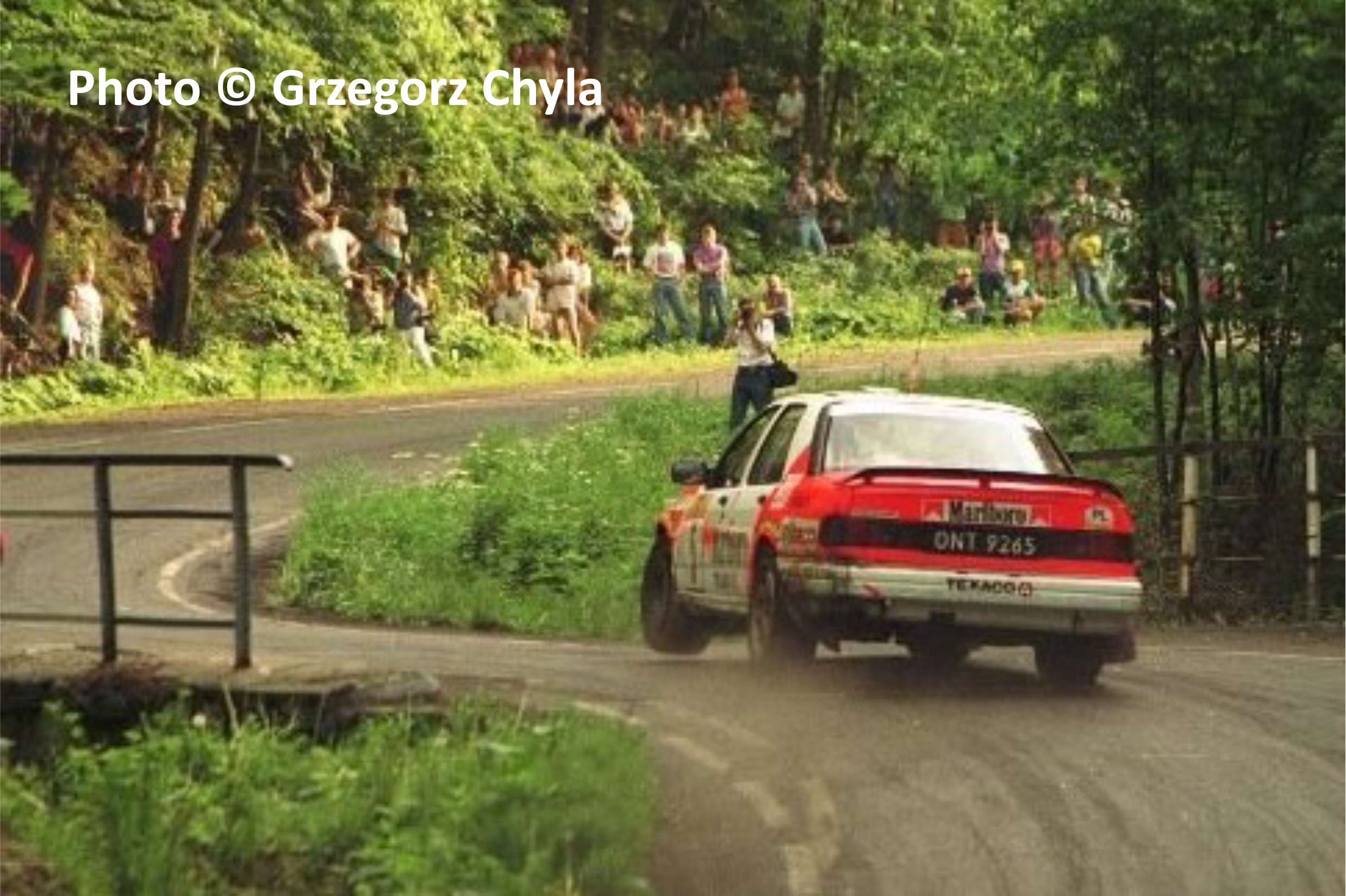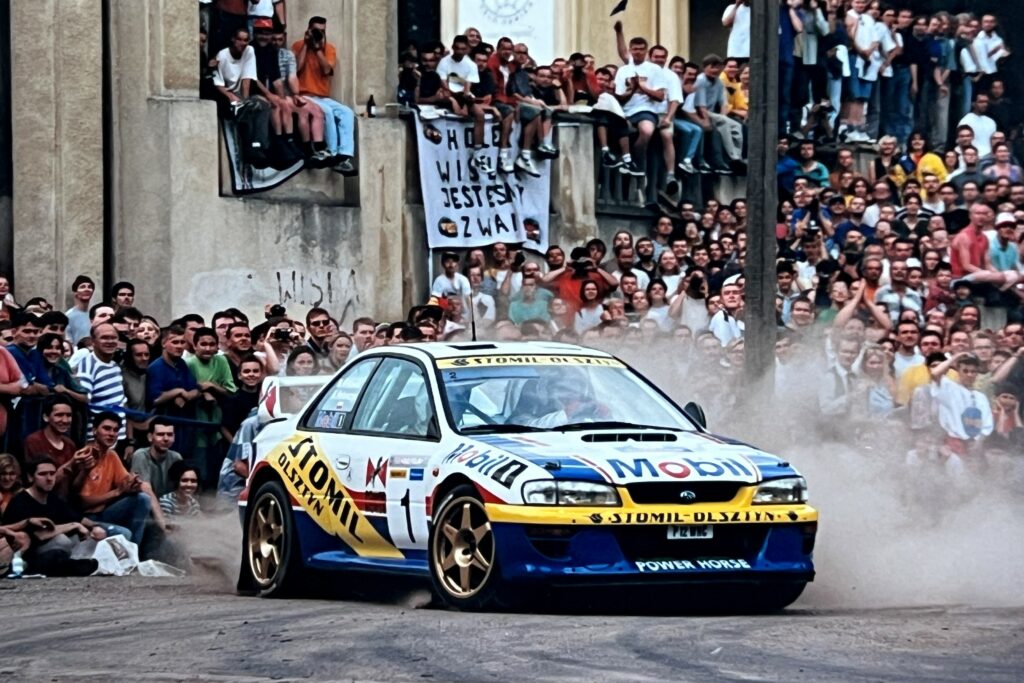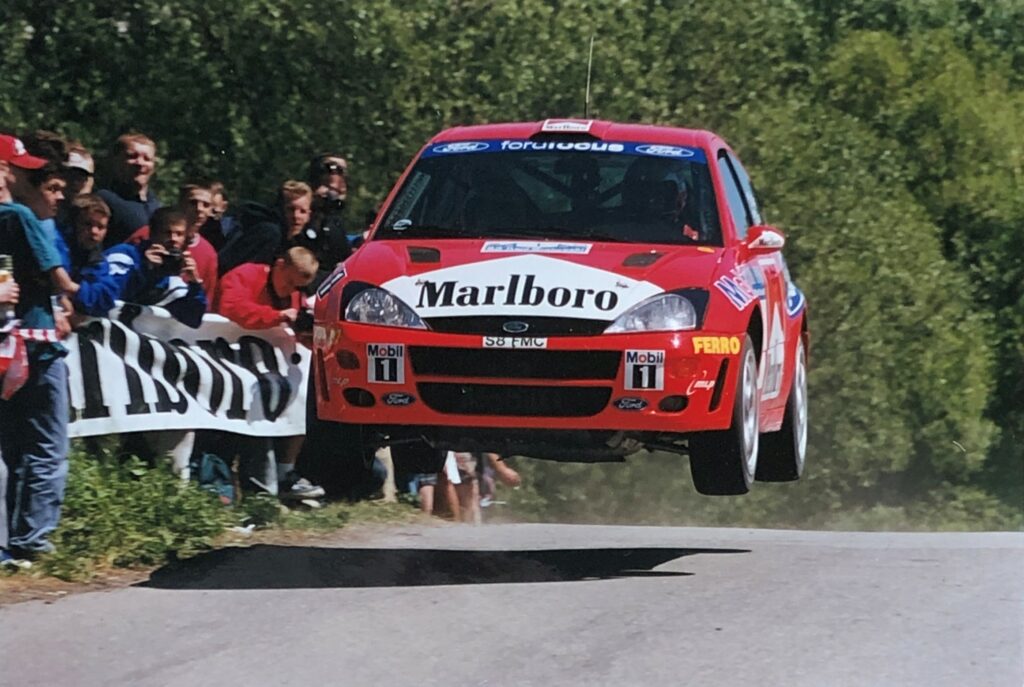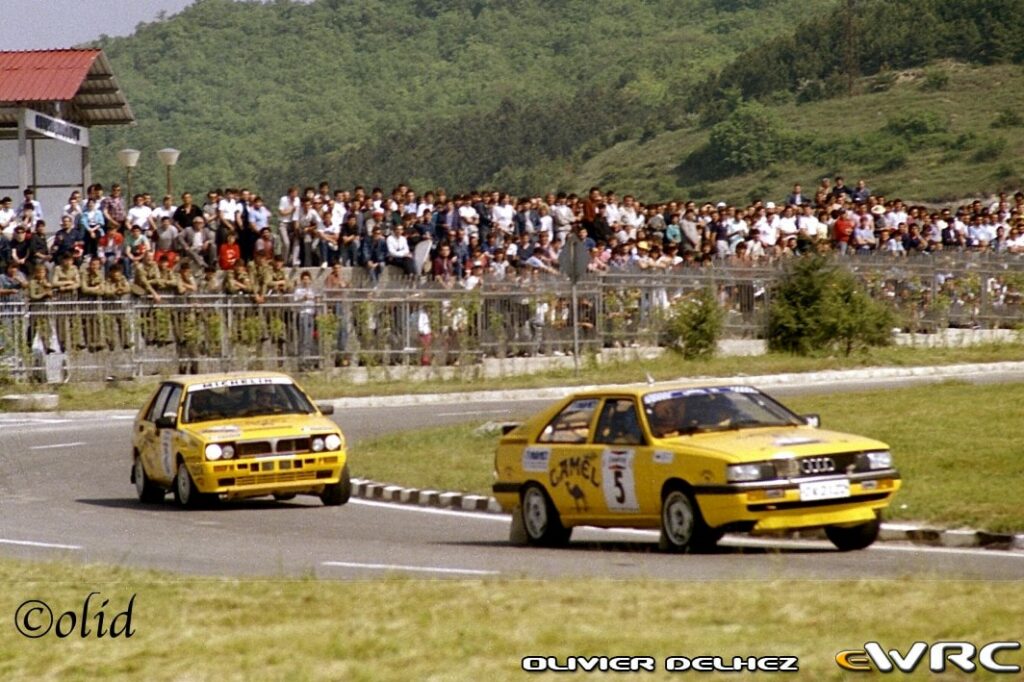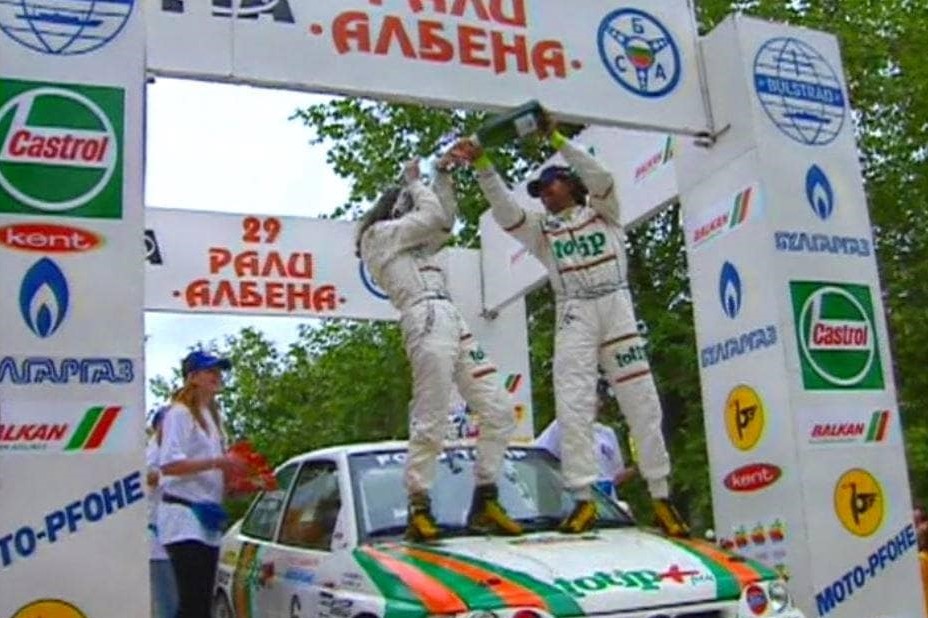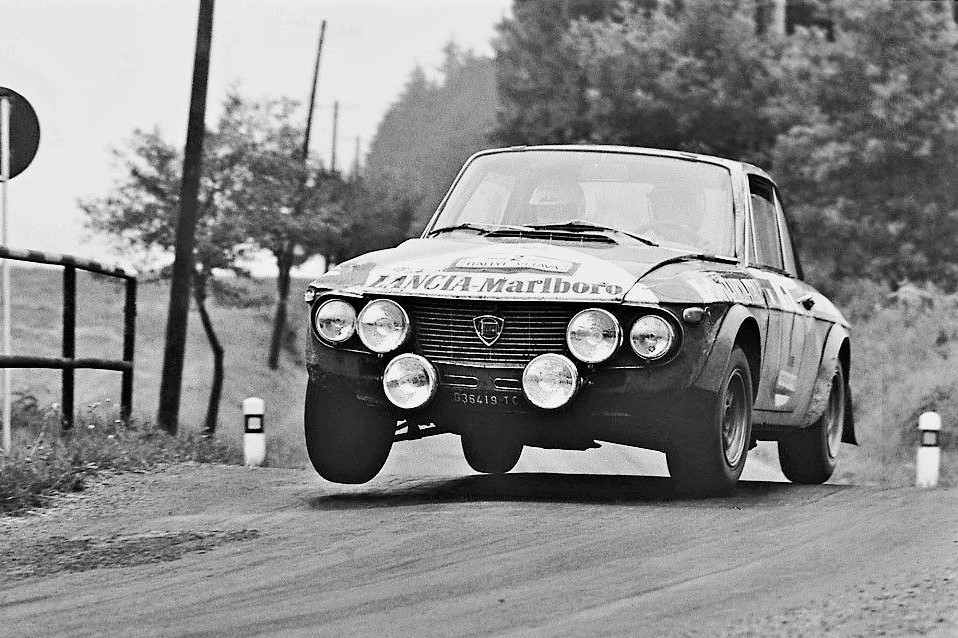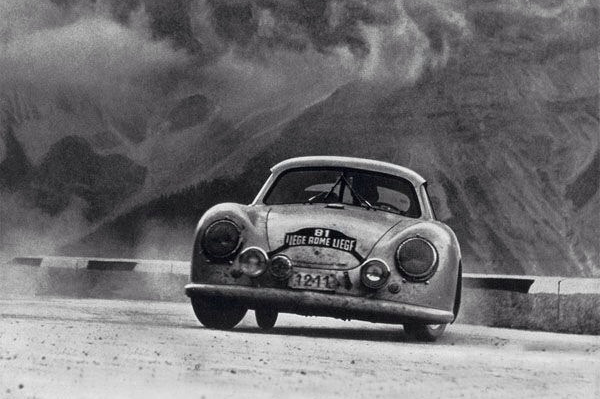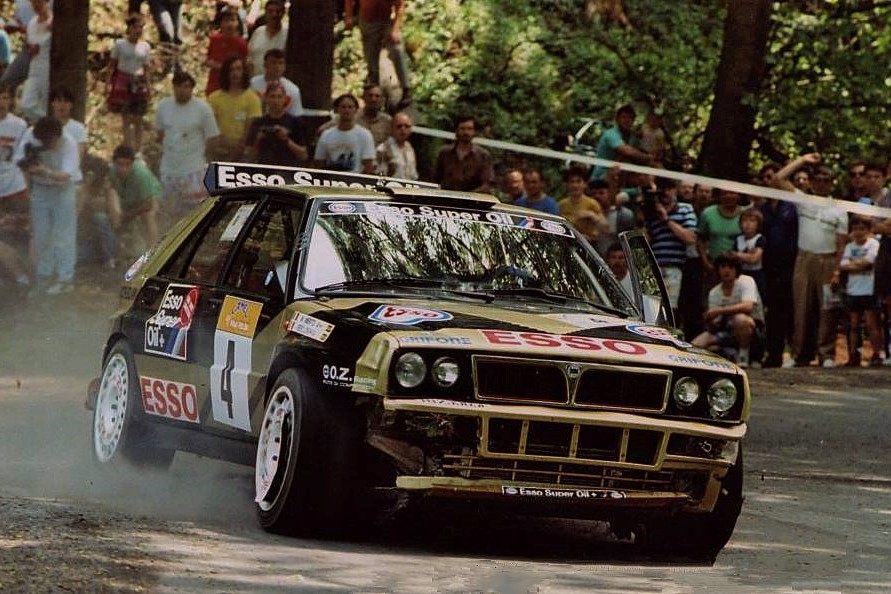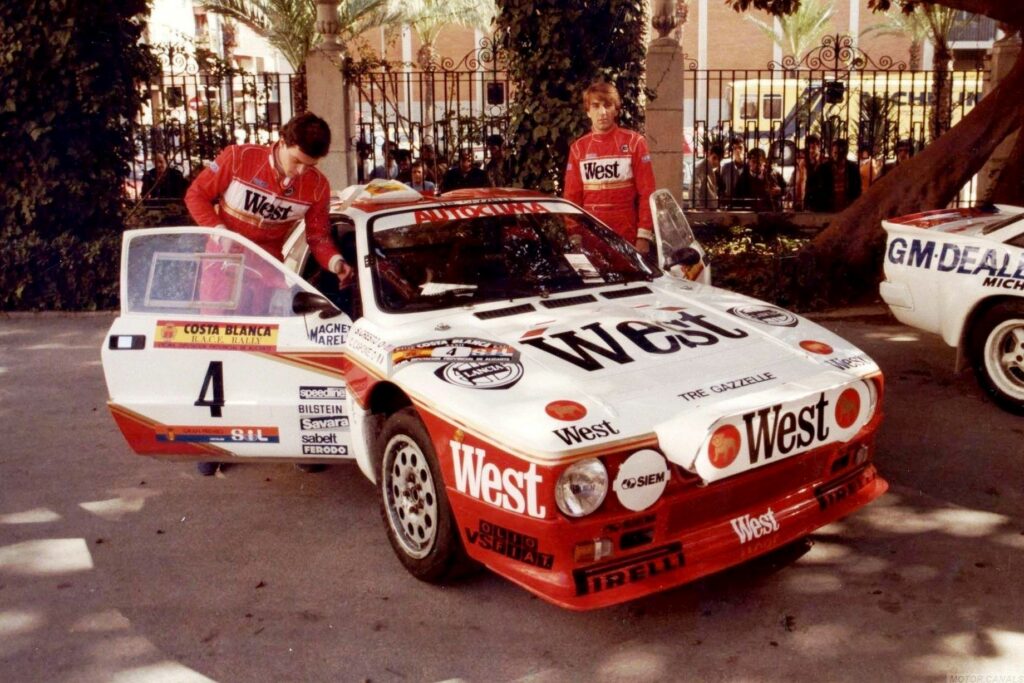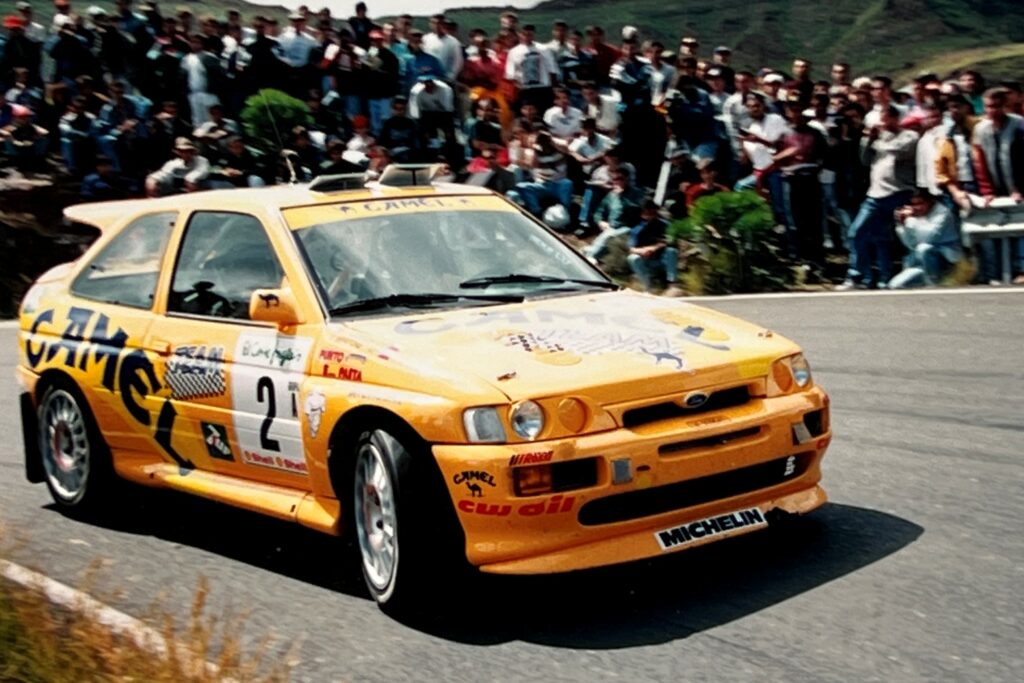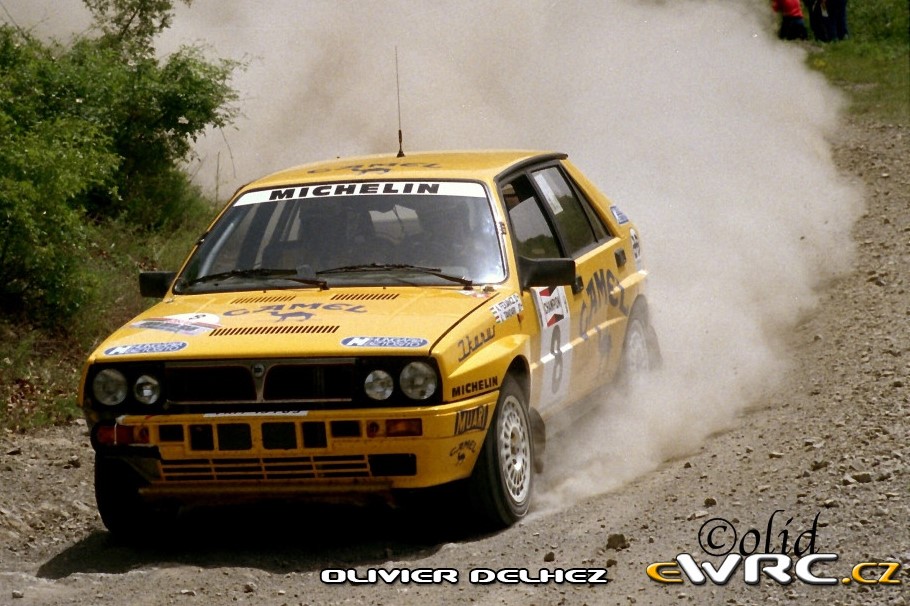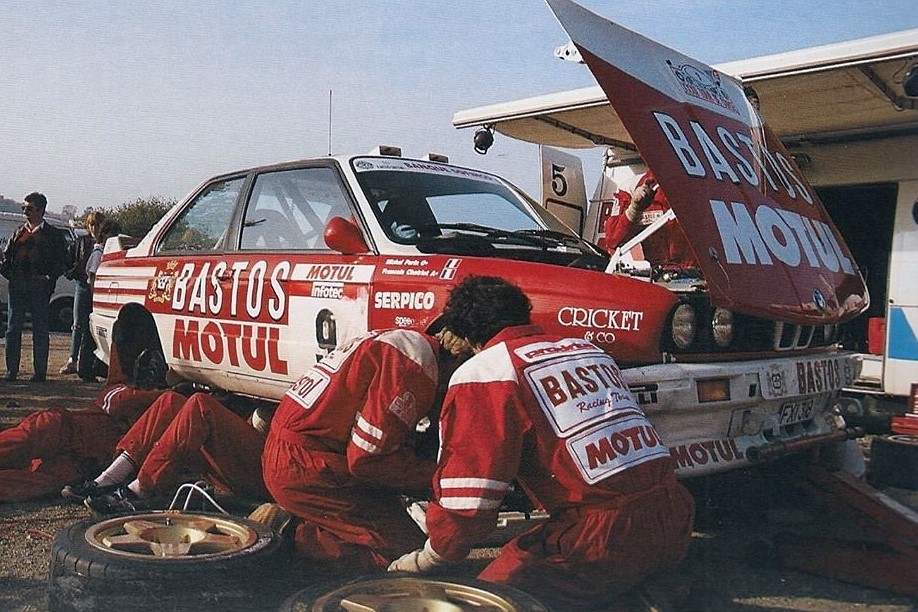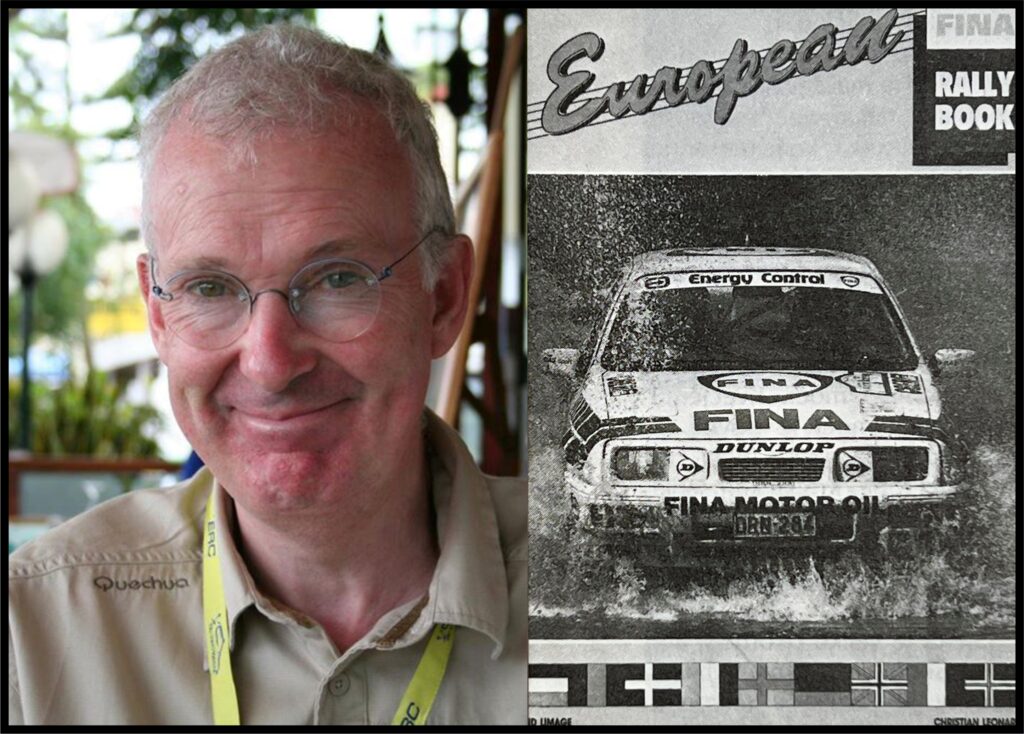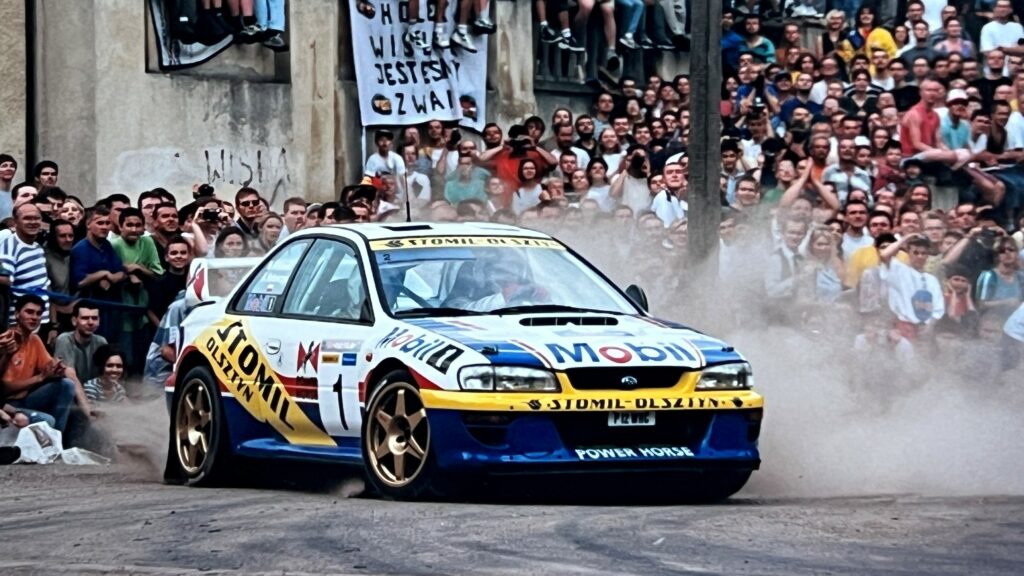Author © Werner Riedl
The CYPRUS Rally, one of the hardest challenges in ERC
Motorsport arrived relatively late on the Mediterranean island of Cyprus, and it was in the 1950s when Cypriot enthusiasts joined their British counterparts to establish the first motorsport clubs. However, even at that time, the number of donkeys on the roads, if you could call them that, was higher than that of motor vehicles. The early rallies were more of a combination of racing and reliability, with the primary goal being to finish at all. With the increasing technical know-how of the drivers and the reliability of the vehicles, it became clear that a different type of event was needed. Therefore, in 1970, the Cyprus Automobile Association and the long-time sponsor ROTHMANS, now owned by the BAT (British American Tobacco) conglomerate, joined forces to organize an international rally. This marked the start of the renowned ROTHMANS CYPRUS Rally as part of the European Rally Championship in the 1980s and 90s!
At least in the first edition of the CYPRUS Rally in October 1970, the future world champion Hannu MIKKOLA, with his Swedish co-driver Gunnar PALM, was among the participants, driving a Ford Escort Twin Cam. However, the Finn had to retire from the race due to an engine failure. The winners of this event, which had three drivers in the British-Cypriot team, were Victor ZACHARIADES, Loris ELLINAS, and Roger FISHER in a Fiat 125. The first International CYPRUS Rally in 1971 was won by the then national champions Christos KIRMITSIS and co-driver Pete LAWRENCE in a Ford Escort TC. The early events were tough, demanding, and, above all, long and ultimately punishing on the vehicles, as they were mainly held on almost impassable roads that hardly deserved to be called “roads.” Nevertheless, the event gained an exceptionally good reputation, not least due to its efficient organization, warm hospitality towards the teams, journalists, and, of course, the fans.
The first interruption occurred in 1974 and 1975 after the coup led by the Greek Junta in July 1974 against the President of the Republic of Cyprus, with the aim of uniting Cyprus with Greece, was ultimately thwarted. In response, Turkish troops were able to occupy the economically and tourismically important northern part of the island. This division of the island, which still exists today, did not prevent Cypriot patriots from resuming the 4th International CYPRUS Rally in 1976, which had by then become a part of the European Rally Championship. And it featured strong competition, including Andrzej JAROSZEWICZ from Poland (Lancia Stratos HF), Shekhar METHA from Kenya (Datsun 160J), the Frenchman Bernard DARNICHE (Lancia Stratos HF), and the Spaniard Antonio ZANINI (SEAT 1430).
The winners’ list of the event titled ROTHMANS CYPRUS Rally from 1979 onwards is quite international, featuring several future rally world champions. These include the Swedes Stig BLOMQVIST (1973) and Björn WALDEGARD (1988), as well as the Finn Ari VATANEN (1979). Additionally, there’s Safari Rally legend Shekhar METHA (1976), the Britons Roger CLARK (1978 & 1980), Jimmy McRAE (1983), and David LLEWELLIN (1987), the American John BUFFUM (1984), and European Champions Antonio “TONY” FASSINA (1982), Patrick SNIJERS (1986), Yves LOUBET (1989), Armin SCHWARZ (1996), Krzysztof HOLOWCZYC (1997), and Andrea NAVARRA (1998). The Italian Alessandro FIORIO won three consecutive times from 1992 to 1994. Local drivers also had their moments of glory in Cyprus’s biggest rally, with Dimi MAVROPOULOS, living in London, achieving his first and only victory on the island in 1990 after 15 unsuccessful attempts. Similarly, Vahan TERZIAN, who dominated in Cyprus for over a decade, claimed victory in 1981.
Legendary at the CYPRUS Rally was always the first leg, which was driven at night and posed an unique challenge due to the often very strong dust development. The length of the rally, with an average speed usually below 60 km/h even in the 1990s, was also exceptional. In 1982, for example, there were no fewer than 37 special stages divided into 4 sections, with a total length of 1.400 kilometers. The longest total driving time for a winner was an incredible 13 hours and 49 minutes, achieved in 1981 by winner Vahan TERZIAN driving a Mitsubishi Colt Lancer, as this model was called on the island.
From 1982 to 1999, the ROTHMANS CYPRUS Rally was counted as the final round of the European Rally Championship with a coefficient of 4 (later coefficient 20). However, the organizers’ desire had always been to become a part of the World Rally Championship (WRC). In the year 2000, that wish was granted, and Cyprus became a part of the WRC, featuring renowned drivers like Carlos SAINZ, Colin McRAE, Marcus GRÖNHOLM, Petter SOLBERG, and four-time winner Sebastien LOEB. From 2010, it was included in the IRC (International Rally Championship) and MERC (Middle East Rally Championship), and from 2014 to 2019, it was once again part of the ERC (European Rally Championship). From October 6th to 8th, 2023, the CYPRUS Rally will take place as a round of the MERC, celebrating its 50th edition as an anniversary event after a year’s hiatus. It will be held as a gravel event, featuring 12 special stages covering a total distance of 195 kilometers (733 km in total).
E.L.P.A. Rally HALKIDIKI, the greek round of ERC
The sport of rallying has a long tradition in Greece, with the 1st Rally Acropolis was held in 1953 and being part of the European Rally Championship from 1956 to 1972. From 1973, with the introduction of the manufactors World Rally Championship, the Acropolis Rally became a fixed part of the WRC, and from 1979, it was also included in the newly established Driver’s WRC. In order to be part of the European Rally Championship again, the Automobile and Touring Club of Greece (E.L.P.A.) decided to organize a new rally away from the well-known stages of the World Championship event. They found a suitable location on the northern peninsula of Halkidiki. The first Halkidiki Rally was held in August 1976, covering a total distance of 1,040 kilometers with 14 demanding gravel stages over 304 kilometers, making it already quite challenging. From the second year, the Halkidiki Rally became a round of the European Rally Championship with a coefficient of 1. The winners of the first two editions were Tasos LIVIERATOS, also known as “SIROCO”, driving a Renault Alpine A110 and a Datsun 160 in 1977.
With the 6th Halkidiki Rally in 1981, the event was elevated to the elite group of ERC rounds with the highest coefficient and remained there until the last edition of the E.L.P.A. Rally in 2010. The rally center at Porto Carras on Sithonia provided an ideal base with complete infrastructure, and the start ceremony was held in the capital city of Central Macedonia, Thessaloniki, for several years for media coverage. The importance of the Halkidiki Rally is evident from its winners’ list, as 16 European Rally Champions of the respective years were also winners of this event. These included names like Antonio CARELLO (1978), Jochi KLEINT (1979), Antonio ZANINI (1980), Adartico VUDAFIERI (1981), Carlo CAPONE (1984), Fabrizio TABATON (1986 & 1988), Dario CERRATO (1987), Yves LOUBET (1989), Piero LIATTI (1991), Erwin WEBER (1992), Krzysztof HOLOWCZYC (1997), Henrik LUNDGAARD (2000), Renato TRAVAGLIA (2002), Bruno THIRY (2003), and Simon JEAN-JOSEPH (2004). Other notable participants included Jimmy McRAE (1982), Miki BIASION (1985), and Giandomenico BASSO (2005). Greek drivers who achieved success in the event over the decades included Leonidas KIRKOS (1995 & 1996) and Ioánnis PAPADIMITRIOU (1999 & 2009), each with two victories, and Armodios “Aris” VOVOS, a Greek entrepreneur, who secured three wins (1998, 2001, and 2010). Local drivers Giorgos MOSCHOUS (late 1970s to mid-1980s) and Ioánnis VARDINOYIANNIS, also known as “JIGGER” (late 1980s to early 1990s), achieved two second-place finishes each but did not clinch a win.
As the European Rally Championship increasingly shifted to an all-asphalt series compared to the all-gravel World Rally Championship in the mid-1990s, few internationally renowned drivers participated in the Halkidiki Rally, primarily due to cost considerations. Nevertheless, the stages on the northern Greek peninsula were considered unique in Europe. As a result, the organizers decided to change the rally’s character and moved it to the southern Peloponnese peninsula in Western Greece, with the rally center located in Patras and later Itea, starting from 2002. The event continued to be part of the European Rally Championship, which had transitioned to being entirely asphalt-based. Unfortunately, due to financial reasons, the 35th edition of the E.L.P.A. Rally, planned for April 2011, had to be canceled. Consequently, after 35 successful years, Greece disappeared from the map of the European Rally Championship.
The Story of the famous RALI VINHO DA MADEIRA
A truly unique event in the European Championship calendar is the Rali VINHO DA MADEIRA in Portugal. This rally takes place on the Atlantic island known for its wine and, especially in the summer, for its beautiful flowers. It was first held in 1959 by the local “Club Sports da Madeira,” with the victory going to the then only 21-year-old José Bernardino LAMPREIA driving an MGA Roadster. The rally, originally named “Volta á Madeira,” gained international recognition in 1967 after the victory of Renault works driver Jean-Pierre NICOLAS in a Renault 8 Gordini. Starting from 1979, on its 20th edition, Madeira became part of the European Rally Championship, and from 1983 until 2012, it was continuously included with a highest coefficient of 4, and from 1988 onwards, with a coefficient of 20.
Especially in the 1980s and 1990s, Madeira was highly popular among drivers from Central Europe, mainly due to generous benefits and invitations from the organizers. The rally’s unique characteristics, such as sections on cobblestone roads or the night stage held on the first day until 1991, along with the famous special stages like Chao da Lagoa with the Estrada Florestal and its beautiful flowers, as well as the stage over the 1000 meters high Encumeada Pass, which connects the north and south of the island. Both stages are still part of the Rally VINHO DA MADEIRA today, albeit in modified forms, and they remain the heart of the event.
The most successful driver in the years of the Rally European Championship is the Italian Andrea AGHINI, who celebrated a total of four overall victories. He won in the years 1992, 1994, 1998, and 2002. However, the former Lancia works driver gained questionable fame due to his spectacular accident in 1993, during which his Lancia Delta HF Evo was completely destroyed. Other prominent winners on the “Flower Island” include Ari VATANEN (1978), Miki BIASION (1983), Henri TOIVONEN (1984), Fabrizio TABATON (1986, 1990 & 1991), Dario CERRATO (1987), Patrick SNIJERS (1988 & 1993), Yves LOUBET (1989), Piero LIATTI (1995, 1997 & 2000), and Bruno THIRY (1999). The 64th edition of the Rali Vinho da Madeira will take place from August 3rd to 5th, 2023, as the 11th out of 20 events in the European Rally Trophy 2023, alongside the Ypres Rally, Bulgaria, Rallye d’Antibes, and Rallye du Valais in Switzerland. The rally will kick off with a 2.8-kilometer-long Super Special stage at the port of Funchal, in front of up to 30,000 spectators and a live TV broadcast.
Photocredit © Archiv FB Rali Vinho da Madeira
THE GERMAN ROUND OF EUROPEAN RALLY CHAMPIONSHIP
24 HOURS Rally of YPRES – The Story
If you are looking for the most important European championship race of the 1980s and 90s, you cannot avoid the 24 Hours of YPRES. The Belgian contribution to the European Rally Championship is one of the most famous events in the calendar and was already held for the first time, in June 1965 by the Automobile Club of Ieper, the A.C. Targa Florio under the leadership of Frans THEVELIN. Initially as the 12 Hours of Ypres, and up from 1974 when the rally was also classified for the European Championship, as the 24 Hours of Ypres. The first winner in the ERC was the unforgettable Gilbert STAEPELAERE on a Ford Escort RS 1600, who won the rally four times in his career.
Photocredit © Archive FB Ypres Rally, Olivier Delhez, Petr Fitz, archive
STATISTICS
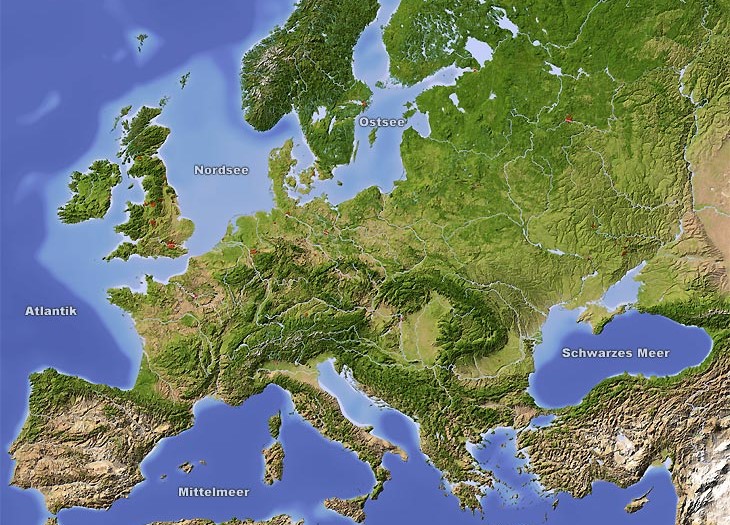
There is hardly a racing series in which there are no statistics to which the very best orient themselves. Or rather, they are the ones that the media and journalists like to draw comparisons from. This is also the case in the European Rally Championship, in our case the years 1980 to 1999. No less than 991 rallies counted towards the ERC in these two decades, albeit with different classification coefficients. And, if you add the nations in Eastern Europe, now separated by wars or political decisions, in 26 different countries. Most ERC races were held in Italy and France, but interestingly none in the former USSR or its successor states. There were also no ERC races in Denmark, Hungary and Luxembourg during this period.
Of these almost 1000 rallies, exactly 185 were awarded the highest classification coefficient. Until 1987 this was coefficient 4, from 1988 coefficient 20. Clearly the most successful driver of this period was the Belgian Patrick SNIJERS, with no less than 43 overall victories in the ERC, 14 of them with the highest coefficient 4 or 20. SNIJERS was not only European Champion in 1994, but also runner up European Champion in 1986, 1987, 1988 and 1993. Thus he clearly distanced his compatriot Robert DROOGMANS, who had managed a total of 26 victories, 8 of them in the highest category. In third place the Italian Dario CERRATO (25/8) ahead of his compatriot Gianfranco CUNICO (21/3), who, however, could benefit from the high number of Italian runs in the ERC. The multiple Italian champion never had ambitions for an ERC title.
But if you only take out those winners who had won ERC rounds with the highest coefficient, Patrick SNIJERS is also at the top with 14 successes, but behind him Fabrizio TABATON (ERC 1986 & 1988) with 9 successes, ahead of Robert DROOGMANS (ERC 1990) and Dario CERRATO (ERC 1985 & 1987) with 8 overall victories each. Piero LIATTI (ERC 1991), Enrico BERTONE (ERC 1995 & 1999) and Krzystof HOLOWCZYC (ERC 1997) achieved 5 victories each in rallies with maximum coefficient (1980-1999).
And there is another classification, the one of the ERC overall winners from 1953 to 2022, where Patrick SNIJERS (44) is also in the lead, but behind him is the Austrian Franz WITTMANN, who unbelievably scored his 28 successes between 1974 (Taurus Rally in Hungary) and the end of his career in 2003 (Jänner Rally in Austria). After all, Franz WITTMANN was Vice European Champion in 1978.
The Rajd POLSKI Story
It can be said that there are only a few rallies in Europe that have such a long history as the Rajd POLSKI, which was incredibly held for the first time in 1921. That is more than 100 years ago! Strictly speaking, it is the second oldest rally in the world after the Monte Carlo Rally, which was held for the first time in 1911, and which, with a few exceptions, is still being held today without interruption. It is being held for the 79th time as ORLEN Rajd Polski and the third round of the European Rally Championship in the Mikolajki area in the north-east of the country.
The Poland Rally was part of the European Championship for the first time in 1960, won by the German Walter SCHOCK with co-driver Rolf MOLL on a Mercedes-Benz 220, who also won the European Championship title in the same year, the second of their career after 1956. The first Polish victory in the European Championship was in 1964, at the 24th Rajd Polski. Sobieslaw ZASADA on a Steyr Puch 650 TR won the rally a total of four times and was also crowned European Rally Champion in 1966 (class G2 – Mini Cooper S and Steyr Puch), 1967 (G1 – Porsche 911) and finally in 1971 (B.M.W. 2002 Ti).
From 1975, the first year of the European Rally Championship with coefficients, the organiser changed to the Automobile Club Dolnoslaski and the region around Wroclaw and also brought the elite of Europe to the start with the highest coefficient. With Jean-Claude ANDRUET (1970), Raffaele PINTO (1972), Maurizio VERINI (1975), Bernard DARNICHE (1977) as well as Antonio ZANINI (1980), the European champions of these years won the Rajd Polski, which at the peak of the rally at the end of the 1970s had to complete more than 50 special stages over up to 600 kilometres.
With the imposition of martial law in Poland from 1981 to 1983, the Rajd Polski was clearly no longer feasible, and it was not until 1984 that the rally returned to the European Championship calendar, albeit only with a coefficient of 2. The winner at that time was the Swede Ingvar CARLSSON with co-driver Benny MELANDER on a Mazda RX-7. It took another 5 years until the Poland Rally was awarded the highest category of the European Rally Championship again, starting in 1989. This meant that the elite drivers of the European Rally Championship were at the start again, and with the demanding special stages and the tens of thousands of fans, it was certainly a highlight in the calendar of the European Championship.
After the tragic accident of the popular Marian BUBLEWICZ, who secured the European Rally Championship runner-up title in 1992, the fans had a national hero again from 1995 onwards, Krzysztof HOLOWCZYC, who entered the European Rally Championship with title ambitions. Exactly 20 years after the last Polish winner (1976: Andrzej JAROSZEWICZ on a Lancia Stratos HF), Krzysztof HOLOWCZYC was the first Pole not only to win the Rajd Polski again, but also the European Championship title in 1997 on a Subaru Impreza. He could have been followed by Janusz KULIG in the new decade, but he also died in a tragic accident in the winter of 2004. With the prospect of establishing the Poland Rally in the World Rally Championship as well, the team switched from the south of Poland to the north-eastern region of Mikolajki in 2005, and thus from asphalt to fast gravel stages. In fact, the Poland Rally was part of the World Championship five times in 2009 and from 2014 to 2017. Next weekend, from 19 to 21 May 2023, the 79th ORLEN Rajd POLSKI will again be held as a round of the European Rally Championship.
Photocredit © Wladyslaw Sikora, Lubos Salat, Grzegorz Chyla, Archiv
The Rally ZLATNI-PIASSATZI (Bulgaria)
Especially in the 1980s and at the beginning of the 1990s, the rally was a fixed component of the European elite in rallying. The list of winners reads like a Who’s Who of European rallying: Sobieslaw ZASADA (1972), Attila FERJANCZ (1974), Franz WITTMANN (1978), Antonio ZANINI (1979, 1980 & 1983), Adartico VUDAFIERI (1981), Andrea ZANUSSI (1982), Carlo CAPONE (1984), Dario CERRATO (1985), Beny FERNANDEZ (1986), Patrick SNIJERS (1987 & 1994), Robert DROOGMANS (1989), Fabrizio TABATON (1990), Piero LIATTI (1991), Erwin WEBER (1992), Pierre-César BARONI (1993), Enrico BERTONE (1995, 1996 & 1999), Krzysztof HOLOWCZYC (1997) and Alex FIORIO (1998).
Up from 2002, the BULGARIA Rally, as it was called from then on, moved from the Black Sea coast to the interior of the country, namely to the ski resort of Borovetz, about 70 kilometres south of the capital Sofia. Now, from 2016, the rally has returned to Varna as a round of the F.I.A. Balkan Trophy, and after cancellations in 2020 and 2022 due to Corona, a new edition, the 52nd Rally of Bulgaria is planned for September 2023, as part of the EUROPEAN RALLY TROPHY, which this year also includes the Rally YPRES in Belgium, the Rally VINHO DA MADEIRA in Portugal and the Rally D’ANTIBES in southern France.
Photo © Olivier Delhez, archive
The Story of the F.I.A. EUROPEAN RALLY CHAMPIONSHIP
The European Rally Championship was the most important racing series in rallying for 20 years in the post-war period, starting in the early 1950s. The first overall winners came from Germany, with Helmut POLENSKY on Porsche 356 in 1953, followed by Walter SCHLÜTER (DKW), Werner ENGEL, Walter SCHOCK (both Mercedes-Benz) and Ruprecht HOPFEN (Saab 93) in the following years. Until 1972, the European Rally Championship remained the highest category, before the World Motorsport Federation, the F.I.A., introduced the Manufactor World Rally Championship in 1973.
The big manufacturers such as Alpine, Fiat, Lancia, Opel or Porsche became involved in this WRC from then on, whereby after the first WRC title of Renault Alpine in 1973, the Italian brands dominated in the following years. As an alternative for a drivers’ championship, there was still the European Championship as the highest category, names like Sandro MUNARI (1973), Walter RÖHRL (1974) and Bernard DARNICHE (1976 & 1977) entered themselves in the winners’ lists.
Since the European Rally Championship consisted of more than 20 rounds, and in order to be able to better classify the value of the individual rallies, some of which were very different, the various coefficients were introduced from 1975 onwards, by which the points won per event were multiplied. Coefficient 4 for the most demanding rallies, and coefficients 3, 2 and 1 for the lower-rated ERC runs. Another drastic change took place in 1979, when a Drivers’ World Rally Championship was held for the first time, and the best drivers were obliged to take part in this series. At that time, there were already more than 40 rallies that were rated for the European Championship.
From 1980 onwards, it was mainly the private teams that got involved in the European Rally Championship, but attractive rallying was offered there as well. This was also due to the sometimes very different but great ERC rounds: Rali VINHO DA MADEIRA in Portugal, Rally ZLATNI-PIASSATZI in Bulgaria, the 24 Hours Rally of YPERN in Belgium, Rally COSTA SMERALDA on Sardinia in Italy, the Rally CATALUNA-COSTA BRAVA in Spain (which was promoted to a WRC round in 1991), the legendary Rajd POLSKI in the south part of Poland, the CYPRUS Rally or the Rally HALKIDIKI in Greece as well as the Rally GARRIGUES and as its successor the Rally D`ANTIBES in the Cote d`Azur. And, of course, Great Britain, where the MANX INTERNATIONAL Rally was run on the Isle of Man.
By the mid-1980s, the number of European Championship rounds had risen to a total of 50 events, whereby some opponents in the fight for the European Championship title were able to avoid each other due to the relatively small differences in points between the various coefficients and did not even meet directly. For this reason, the 10 best-rated European Championship races in 1988 were rewarded with a coefficient of 20, the Super European Championship races. This was to ensure that the real title contenders would concentrate on exactly these rallies, always with the option of scoring additional points in one of the other coefficients (3, 2 and 1), which were very low in that year. This system was corrected from 1989 onwards, from now on there were the coefficients 20, 10, 5 and 2.
From the 1999 season onwards, the scoring system was adapted to the international standard. No longer the distribution of points to the first 10 in the overall ranking (20-15-12-10 points etc), which had been held since the beginning of the 1970s, but only the top 6 received points (10-6-4-3-2-1) multiplied by the coefficients that were still valid. The end of these coefficients was finally sealed after the 2003 season, the European Rally Championship 2004 thus comprised only 9 events, but of the traditional European Championship rounds of the 1980s and 1990s, the Rajd POLSKI, the YPERN Rally, the Rally BULGARIA (Zlatni), the Rally VINHO DA MADEIRA, the E. L.P.A. Rally (Halkidiki) and the Rally D’ANTIBES have made it into the calendar.
Photo © archive
The (big) sponsorship in rallying
It has always been a challenge to find suitable sponsors for motorsport, especially rallying. But the fact that an entire industry supported motorsport in this way was a stroke of luck. It all started in the 1960s in Formula 1, with GOLD LEAF Team Lotus known to every fan, later joined by John Player Special and Marlboro, which helped the Lancia Team with Sandro MUNARI to the European Championship title as early as 1973. It was realised that the fan at the track and later on the TV screens was the desired target audience.
In the 1980s and 1990s, rally teams with the vehicle branding of CAMEL, ROTHMANS, MARLBORO, BASTOS, WEST and R6 – alongside the big oil companies – were an integral part of rallying. And the money flowed in abundance, too, because in 2001 there were no less than 350 million dollars from the tobacco industry, for motor sport alone. Not all of them, especially the Eastern European teams, received the money in cash for their sport. There, it was not at all unusual to give the tobacco products to the teams for free disposal, for sale, the proceeds of which were then used to finance the rallies. A win-win situation for both sides.
When in 2001 the ban on tobacco advertising in motor sport was passed as of January 1, 2007, this naturally tore a huge hole in the budget of the teams and drivers concerned. At least, they said, there would be enough time to organise a replacement sponsor. But at that time there was already a ban on tobacco advertising in various countries, for example in Germany and Great Britain. In retrospect, one can or must say that this “crisis” was also largely overcome, although one must of course recognise that the disappearance of an entire industry with immense financial resources is not entirely replaceable in the end. But there were and still are ways that lead to the goal. Also for the tobacco industry.
Photo © Olivier Delhez, Jan Marek, Christian Houdek, RVM, archive
In memoriam David LIMAGE – Mr. European Rally Championship
He was more than a friend, a person loved everywhere. On November 8, 2013, the Belgian passed away after a long illness, at the age of 63.
Nobody else knew the European Rally Championship of the 1980s and 90s like he did. He knew the drivers and teams, the organizers, was on site at countless important European Championship rounds, was a press officer, and yet remained a modest man. No major rally magazine could do without his press releases and reports, he was always available and knew every little detail, a living encyclopedia of the European Rally Championship.
His anecdotes are still unforgotten today, he could entertain those around him for hours with them, be it in the press room, on a rally stage or at a joint dinner after a long rally day. Because teams and drivers always had an invitation ready for him, which was also due to his legendary humor.
Adieu l’ami David!
Photo © Yves-Mathieu PARENT
1998 Rajd POLSKI (PL) ERC-20 Krakow, June 11 – 13
Photo © Stomil-Mobil RT
Although HOLOWCZYC did not play a significant role in the 1998 ERC, he was undoubtedly a standout at his home rally. Driving the new Subaru Impreza WRCar, he faced no serious threats during the race, despite a persistent challenge from Janusz KULIG in the Renault Megane Maxi. Kulig managed six best times in the first ten special stages and was close behind HOLOWCZYC in second place. However, KULIG was forced to retire in the 17th stage due to a faulty fuel pump. His second place was inherited by Polish Championship leader Robert GRYCZYNSKI, driving a Toyota Corolla WRCar, who finished ahead of Russian Alexander POTAPOV in a Ford Escort RS Cosworth.
On the final day, HOLOWCZYC dominated the last seven special stages, ultimately winning 14 of the 24 stages and the 55th edition of the Poland Rally by over three minutes ahead of GRYCZYNSKI. In the battle for third place overall, POTAPOV lost two and a half minutes due to a time penalty, finishing sixth overall. His podium spot was inherited by fellow Russian Sergey BALDYKOV, driving a Subaru Impreza WRCar, who edged out Finnish driver Toni GARDEMEISTER in a Lancia Delta HF Evo by 2.6 seconds. Italian driver Gianmarino ZENERE, the 1997 Vice European Champion, finished in fifth place overall in another Subaru Impreza. Meanwhile, his compatriot Alessandro FIORIO, plagued by technical issues on the final day, finished in twelfth place overall in a Ford Escort RS Cosworth.
1996 Rallye EL CORTE INGLES (E) ERC-20 Las Palmas, March 22 – 23
Photo © Christian Houdek
The other contenders for the European title have no chance in Spain. The Pole Krzystof HOLOWCZYC drives spectacularly in the Toyota Celica GT 4WD, but not fast enough. Place 7 in the ERC classification is just as disappointing for the Vice European Champion, as place 8 for the Austrian Kurt GÖTTLICHER on Ford Escort RS Cosworth. Struggling with technical problems is the 1989 European Champion, Frenchman Yves LOUBET, also on Ford Escort RS Cosworth, who loses a total of more than 5 minutes and thus forfeits a better placing than 9th.

